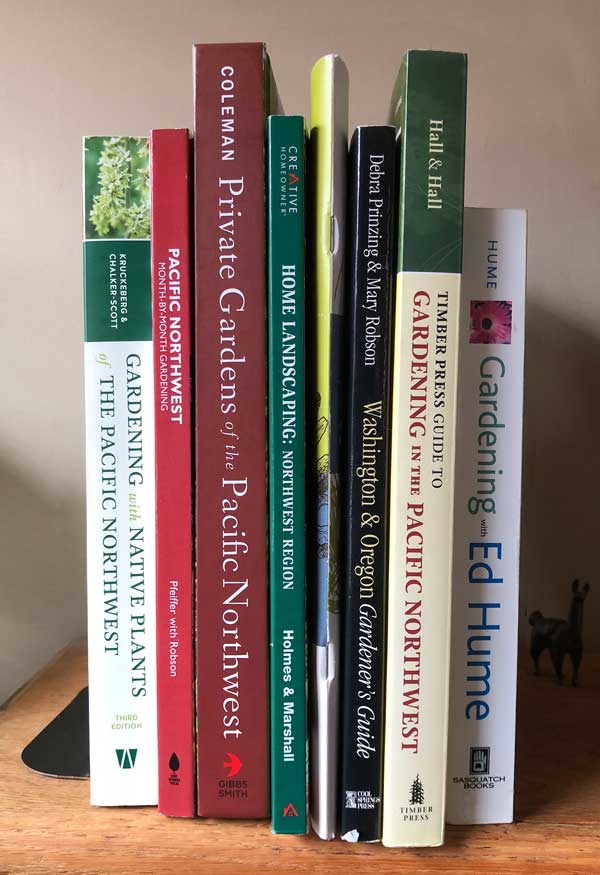
The causes can be many, but a few of the casualties on my list are there because the plant just wasn’t right for the local climate. Nurseries will often sell a plant because it sells, not necessarily because it’s the perfect plant for their local customers’ gardens.
To combat this (and because I love books), I’ve built a collection of books specific to our area that help me make better choices when plant shopping. Because who wants to spend a bunch of money on a plant destined to feed the compost pile?
Pacific Northwest Gardening
In this post, I’ll outline my 8 favorite Pacific Northwest gardening books. For each book, I’ll show some photos and summarize why I like it, then summarize the summary into 3 quick bullet points – for the article scanners out there (like myself). But first, for the recent transplants (or recent gardeners), let’s briefly look at what the Pacific Northwest actually means for gardening.
What defines the Pacific Northwest?
Depending on who you ask, the Pacific Northwest spans southern British Columbia, Washington, Oregon, and sometimes northern California. A few of the books on my list are hyper-local, drilling into the maritime Pacific Northwest, a region sandwiched between the Cascade Mountains to the east and the Pacific Ocean to the West. Here we are under the ‘marine influence,’ to which we owe our soggy winters and mild temperatures. We often enjoy fun weather events unique to our area, like ‘sun breaks‘ and the ‘Pineapple Express.’
What does that mean for our gardens?
Both a blessing and a curse, our typical weather patterns create an environment unlike many others in the U.S. Our winters are mild and wet, contributing to potential fungal problems. Our summer growing season is short and surprisingly dry, which can prove challenging for growing vegetables with long maturation times, and for any plant not suited to summer drought. All of this is a good reason for the existence of exclusive Pacific Northwest gardening books! (A benefit in my mind, who doesn’t need more books?)
Note: I’m providing links to purchase these books through Better World Books. I am not affiliated with them nor earn a commission; I just like that they raise money for literacy.
So without further ado, here’s my list!
1 Gardening with Native Plants of the Pacific Northwest
Arthur R. Kruckeberg and Linda Chalker-Scott
Third edition, 2019
I’m a sucker for well-designed books, which drew me to this 3rd edition of Gardening with Native Plants of the Pacific Northwest. Not only is it a joy to look at, but it’s also a perfect guide for the native plants that you would actually want to use in your garden.
I have a more comprehensive native plant guide for gardeners that I don’t find quite as useful because the content is a bit overwhelming. In contrast, this book is a curated survey of our more ornamental local flora, divided into primary groupings (trees, shrubs). The classification breaks down these groupings by family, then by species, or sometimes subtype. For example, the western mountain ash gets its own account, but the numerous berries are grouped under ‘Berried Shrubs.’
Each account shows at least one glossy photo and a short paragraph of information. Some accounts get more in-depth coverage, outlining helpful ‘Distinguishing features’ and ‘Garden Uses.’ Throughout the text, the author has scattered some hidden gems, such as the Ten Choice Deciduous Shrubs list.
Taking a step back to the beginning of the book: Chapter 1 takes a look at the ecology of native plants in their natural environment. Chapter 2 covers choosing, planting, and maintaining native plants in your garden, along with tips for how to deal with invasives.
If you are looking to plant a native garden bed or just introduce more natives into your existing garden, this is your book.
Why I like it:
- Great design = easy and fun to read
- The curated list of native ornamentals
- Species accounts detail helpful garden uses
2Home Landscaping – Northwest Region
Roger Holmes and Don Marshall
2002
I bought this book years ago (perhaps at Home Depot!), and it’s been a stalwart member of my gardening library ever since. I often flip through the illustrated garden designs in the front half of the book, which offer ideas for various tastes and planting conditions, like ‘A Shady Hideaway’ or ‘Gateway Garden.’ My favorite part (besides the numbered plant callouts, which is a thing I LOVE) is seeing the plant combinations used within the designs. Pairing plants is an area I struggle with, so I find examples super helpful.
The second half of the book covers hardscaping projects, with instructions for how to build an arbor, install a pond, or lay a paver walkway. We haven’t built any of these projects per se, but have referenced them for planning and building out our own designs.
Finally, the book ends with a plant profiles section with short descriptions and photos of each species shown in the first section’s garden designs.
Why I like it:
- Great source for plant combinations
- Garden designs with detailed plant profiles
- Hardscape projects for inspiration or reference
3 Private Gardens of the Pacific Northwest
Brian D. Coleman
2021
I remember spending at least 10 minutes with this gorgeous tome in my hands at the bookstore, waffling about whether I needed it or not. Ultimately I left the store without it, proud of my austerity but bummed that I didn’t have the book. Three months later, lo and behold, my husband gifts it to me for my birthday (I hadn’t told him about my bookstore waffling or that I even knew about the book). Maybe I should not buy books more often.
Anyhow, Private Gardens of the Pacific Northwest is a stunning survey of some of our area’s most beautiful secret gardens. Rich photos of lush local landscapes in peak form are nearly mouth-watering (is that a thing for landscape photos? That’s how I feel anyway!). This book makes me a little jelly, but it also lights a fire in me: both inspiring new ideas and making me get off my butt and out into our garden to push it a little bit closer to the personal Edens showcased within this stunning book.
Why I like it:
- Coffee table worthy, if your coffee table is worthy of such an exquisite book
- Great for design inspiration
- Great for the greenest garden envy
4 Washington & Oregon Gardener’s Guide: Proven Plants for Inspired Gardens
Debra Prinzing & Mary Robson
2004
This is one of the first gardening books I purchased after we bought our house. I still love it and flip through it every year. I’m drawn to its simplicity and focus on easy-to-grow plants. In a hobby with a dizzying array of choices and new cultivars appearing every year, sometimes it’s nice to get back to basics!
I appreciate how the book organizes information like a nature guide, separated into chapters by plant type (trees, perennials, etc.) with big color-coded bars across the top for easy navigation. The easy-to-read layout encourages ‘browsing.’ I’ll often thumb through and land on an interesting plant, then read more about it. Each species account includes the standard cultivation information but also offers design and plant pairing tips and recommended cultivars. Lastly, there are a couple of helpful (but perhaps out-of-date) lists of gardens and plant suppliers here in the Pacific Northwest.
Why I like it:
- Simple guide for stalwart garden plants
- Cultivar recommendations for each species
- Lists of local gardens and plant suppliers
5 Landscaping for Wildlife in the Pacific Northwest
Russell Link
1999
This book inspires me to do better as a gardener. I often flip through it as a reminder of how to garden while keeping the critters in mind. The advice mainly caters to owners of large properties, but it includes tips for everyone, such as instructions on setting up hummingbird feeders and a review of helpful garden insects.
This paperback’s ‘homegrown’ content matches the old-school, ‘homegrown’ feel of primarily black and white pages with a few color plates reserved for animal photos. It’s smartly designed, however, and packed with illustrations and helpful information about how to be a good steward of your land and the other creatures that live on it.
A few valuable instructionals that I like include: what to do with downed or dead wood, where to site bird boxes based on species, and what to do with sick or injured wildlife. The many other site-specific sections include waterway care and how to create a hedgerow. Line drawings and helpful diagrams are peppered throughout.
Another fantastic piece is Appendix D, which contains several construction plans for nest boxes, roosts, and feeders – most of which can be built from a single 1 x 8 x 12 cedar fence board. Not that I’ve made one myself, but I did dogear the chickadee house plan!
Lastly, the robust appendices feature plant lists, tables and maps, and a long list of resources for other publications, native plant nurseries, and relevant agencies and organizations. It’s an all-around great Pacific Northwest gardening guide for ecologically mined gardeners.
Why I like it:
- Wildlife stewardship advice for large and small properties
- Helpful how-tos and problem-solving advice and diagrams
- Build plans for bird boxes and feeders
6 Gardening with Ed Hume: Northwest Gardening Made Easy
Ed Hume, James Hume
2003
Ed Hume is a celebrity in the local gardening world, whose lifetime works include the 50-year-spanning television show ‘Gardening in America,’ countless newspaper columns, several books (including a children’s book titled ‘How to Plant a Bunch of Stuff’), and a seed company that sells products in garden centers across the country. I didn’t know any of this when I bought this book. What an inspiring person!
Hefty for a paperback, this book is almost encyclopedic in its coverage of all things gardening. The author dedicates each chapter to a broad plant ‘type’ (lawns, berries, perennials, etc.), which is broken into 3 sections: general information and cultivation, lists of plants grouped by traits (flowering trees, trees with unusual bark, trees with autumn color), and finally an ‘encyclopedia’ that lists varieties of the plant along with detailed information on each.
My favorite sections are the lists of plants grouped by traits, each accompanied by a short intro covering why these specific plants made the list. The ‘encyclopedia’ is particularly helpful in the vegetable section. Here the detailed accounts use numbers to mark the particular bits of information you might be looking for, like space requirements or feeding times.
Lastly, I trust that all this information is apt for my garden since Ed has lived in and around the Seattle area his entire life. He relates that a significant reason for starting his seed company in 1977 was that many plants that do well in our area were unavailable to consumers in seed form, and he wanted to change that. So cool!
Why I like it:
- Lists of plants grouped by traits
- Encyclopedia of vegetables
- Information geared toward Puget Sound gardening
7 Month-by-Month Gardening: Pacific Northwest
Christina Pfeifer with Mary Robson
2019
Reference guides can sometimes feel like a tsunami of information. This book is refreshingly simple, with concise content and an at-a-glance layout. When I feel in the back of my head there’s something I should be doing in the garden but can’t remember what it is, this is the book I grab.
The book breaks each month into the same main tasks: Plan, Plant, Care, Water, Fertilize, and Problem Solve. These tasks are then subdivided into the primary plant groups (Trees, shrubs, perennials, etc.). Need to know if you should fertilize groundcovers in June? Easy peasy! June > Fertilize > Groundcovers. Also, illustrated, season-appropriate tips and instructionals are peppered throughout the book, making this one of my favorite gardening references for browsing.
Why I like it:
- Not overwhelming – what you need to know when you need to know it.
- Easy-to-find information
- Timely how-to guides
8 Maritime Northwest Garden Guide: Planning Calendar for Year-Round Organic Gardening
Seattle Tilth
Second Edition, 2014
This super-handy publication is a month-by-month guide like the Pfieger and Robson book but geared toward vegetable gardening in the pacific northwest. I’m an itinerant veggie gardener (what with all the shade and all), but I usually plant a few staple crops every year and occasionally experiment with something new. This book is my go-to guide for when to start seeds every year.
My favorite part is the helpful yearly calendar for vegetable growing located smack dab in the book’s center. Each chapter/month shows what to harvest and easy recipes for what you may be harvesting that month. Helpful articles are interspersed throughout the book, such as how to grow cover crops and manage a compost bin.
My final favorite bit is the highly detailed, multi-chaptered appendix that includes lists of vegetable varieties by family, vegetable planting guidelines table (showing days to harvest, spacing, seed longevity, etc.), seed resources, and more.
Why I like it:
- Year-long pacific northwest gardening calendar detailing when to sow seeds
- By-the-month details for when to sow, when to harvest, and what to cook with your harvest
- Comprehensive appendix with valuable charts and lists.
Do you agree with these selections? Disagree vehemently (or even a little)? What do you think are the best gardening books for the Pacific Northwest? Let me know in the comments – I’d love to hear your thoughts!



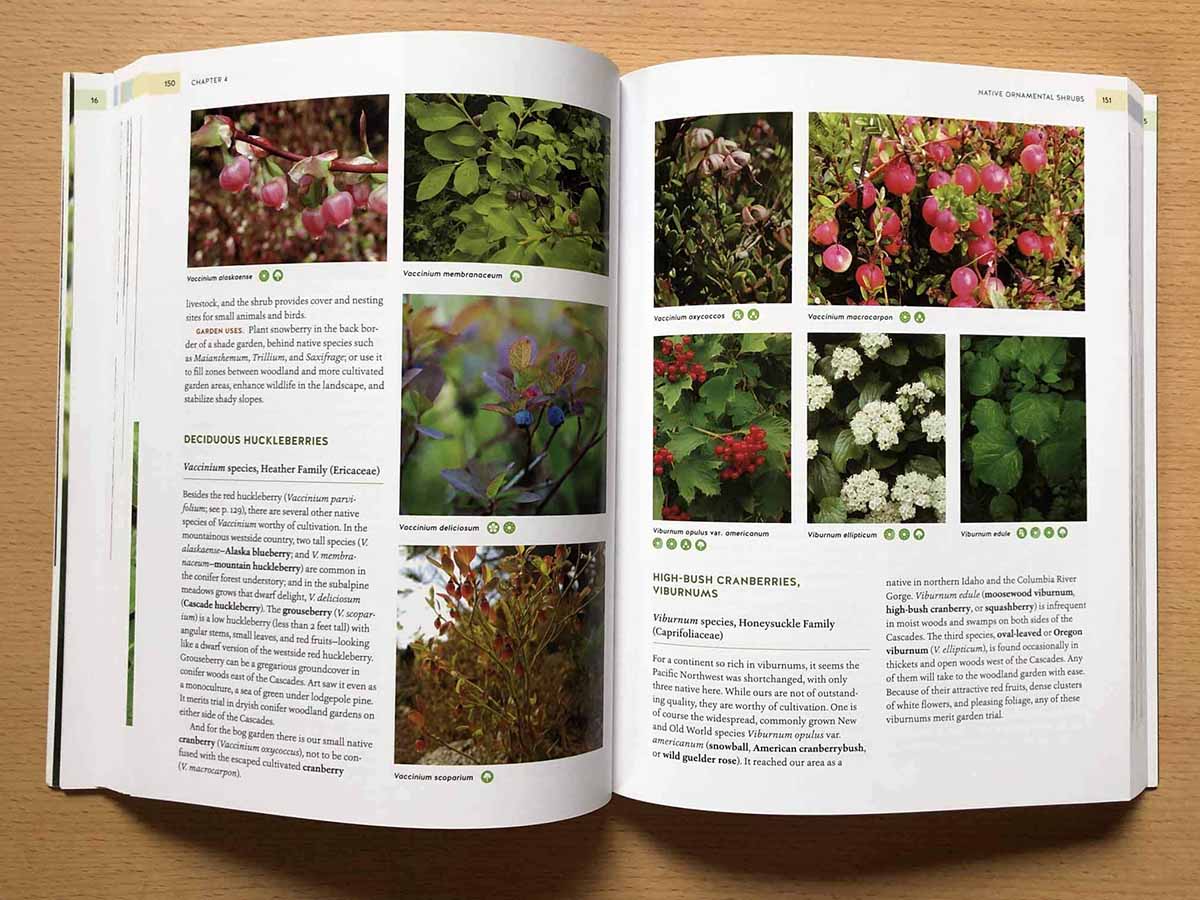
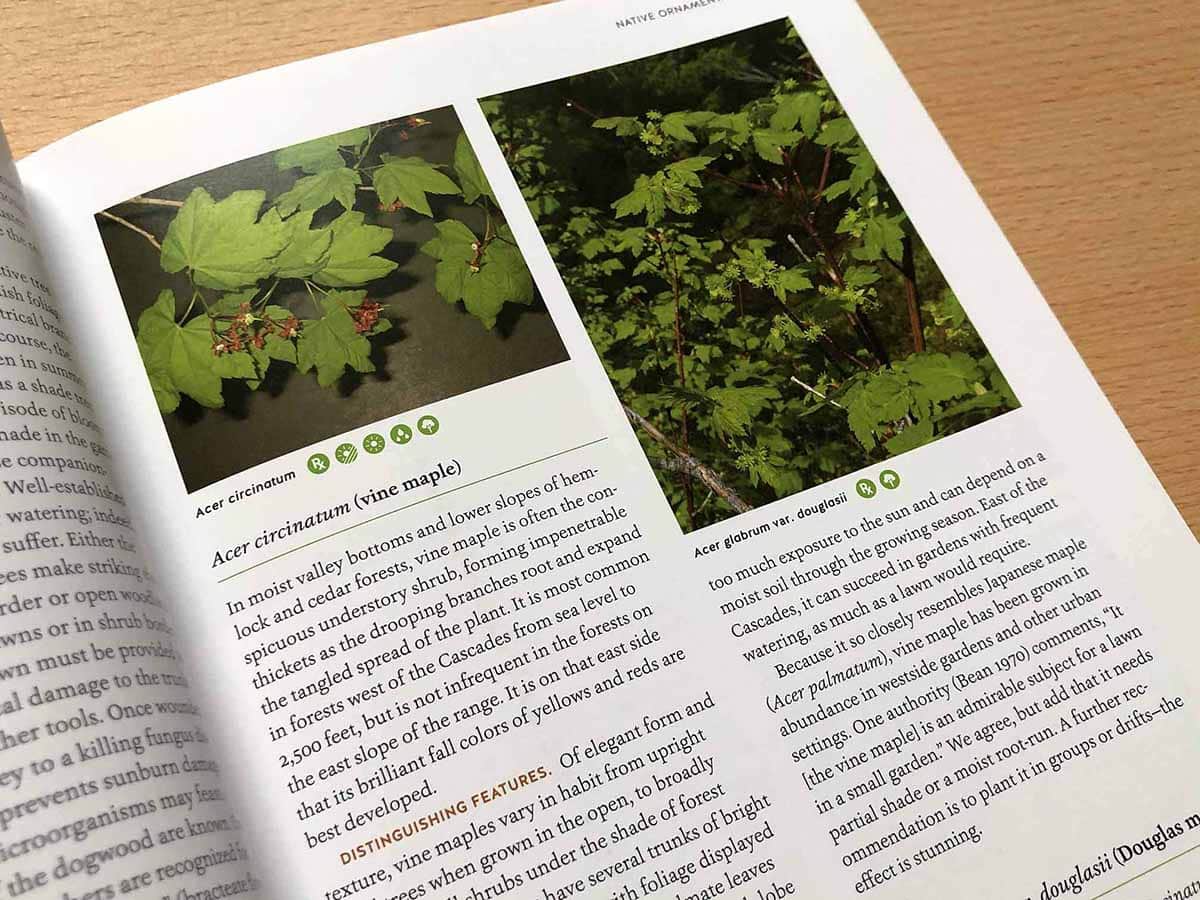
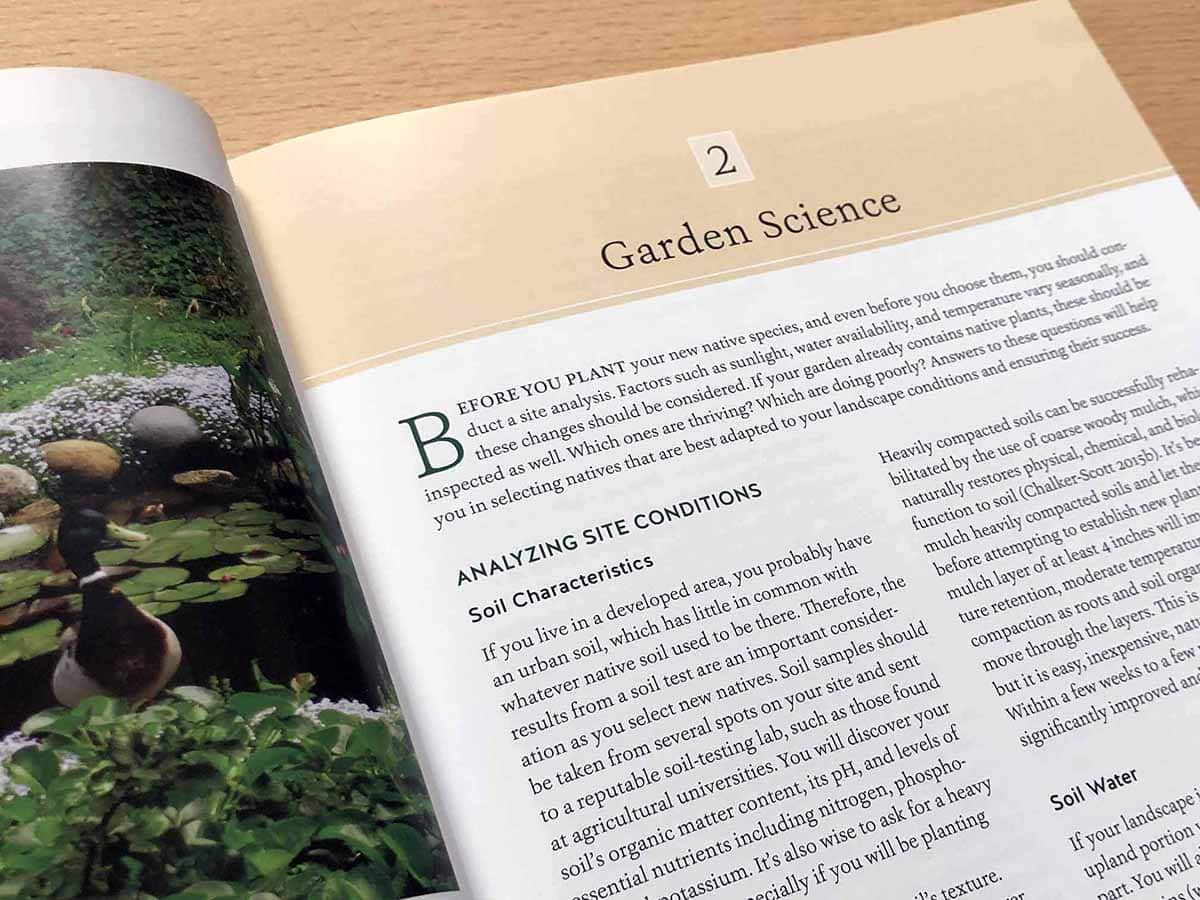
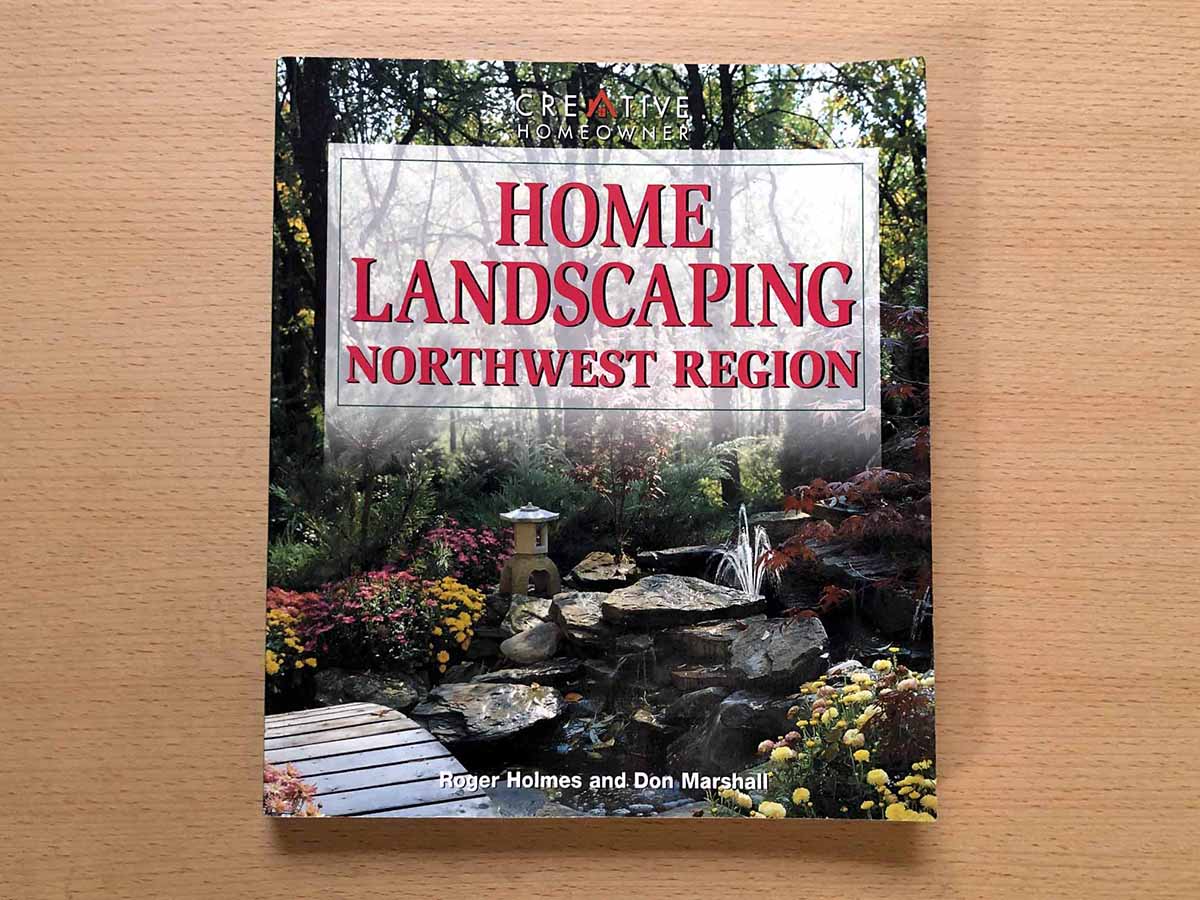

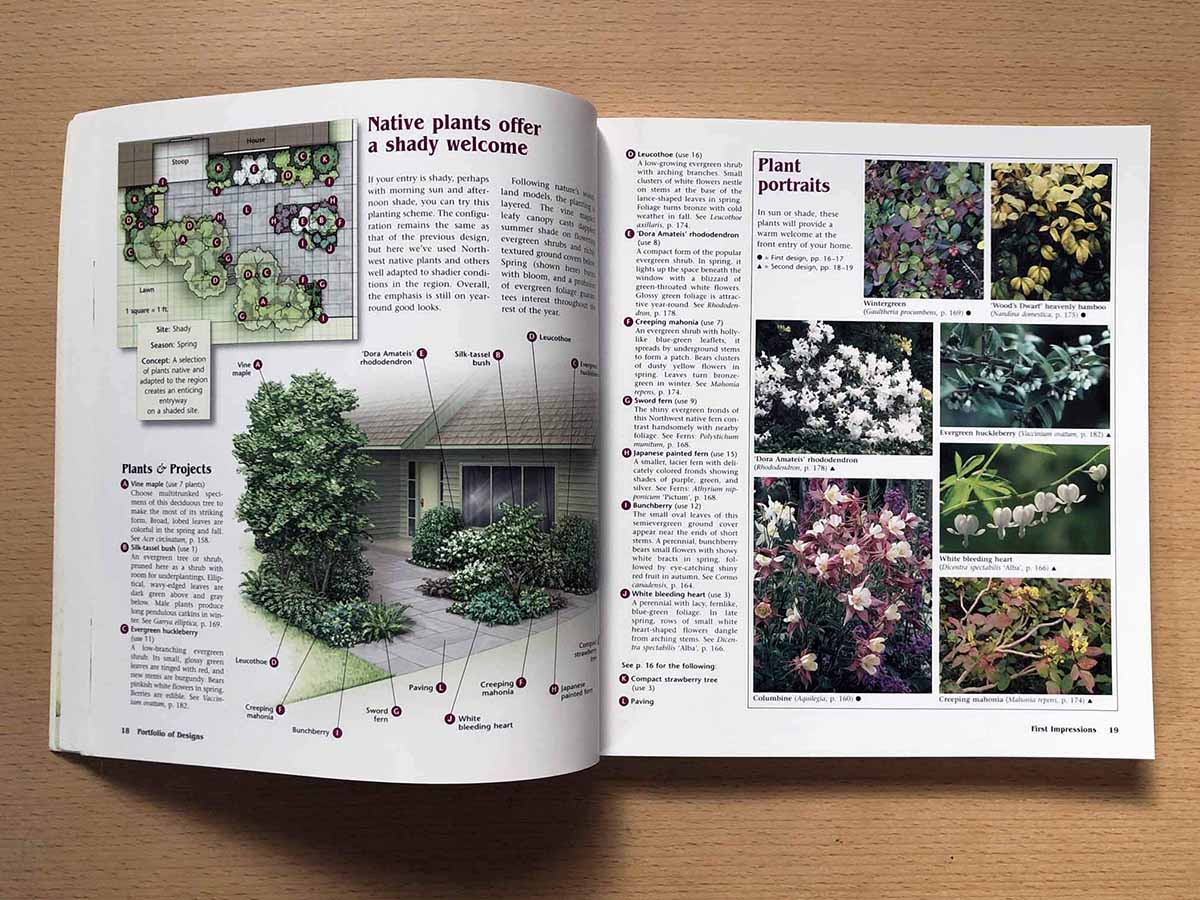

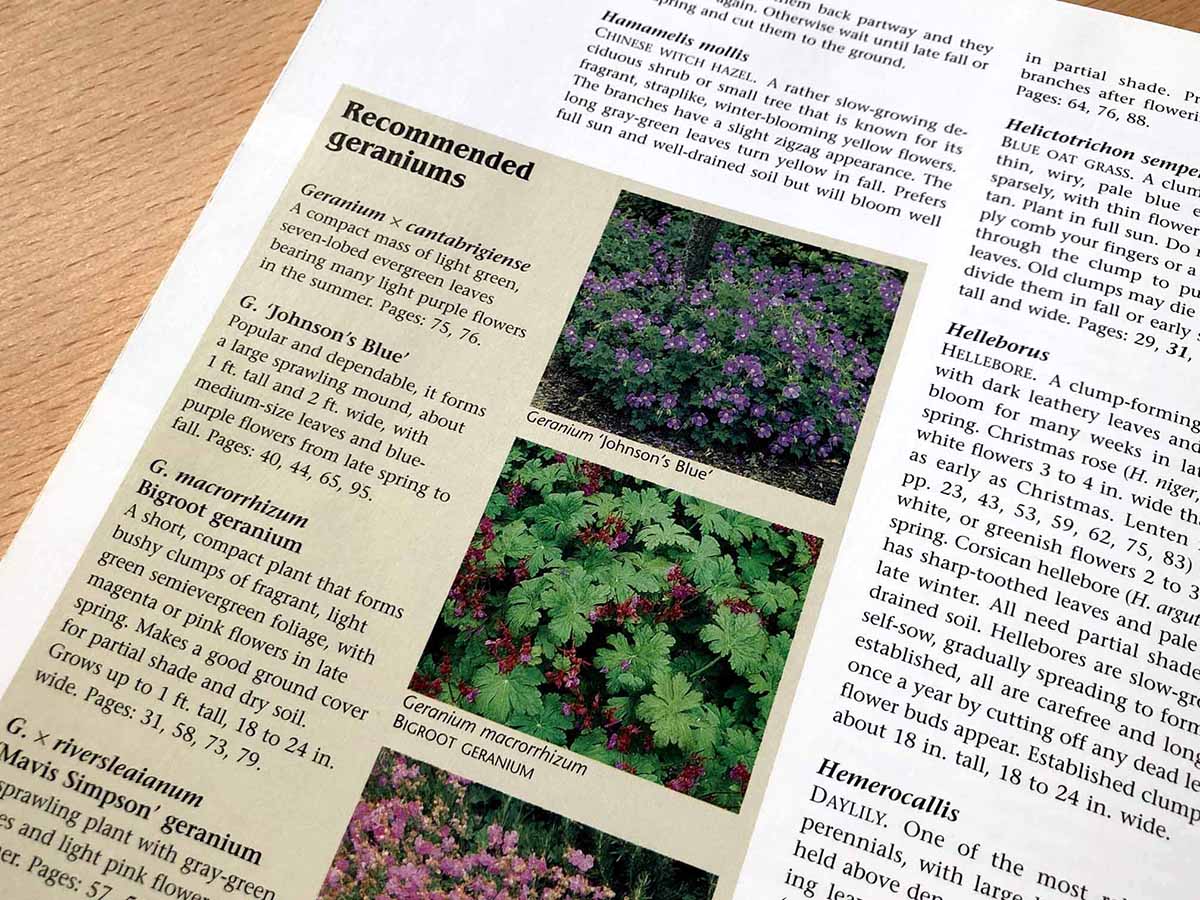

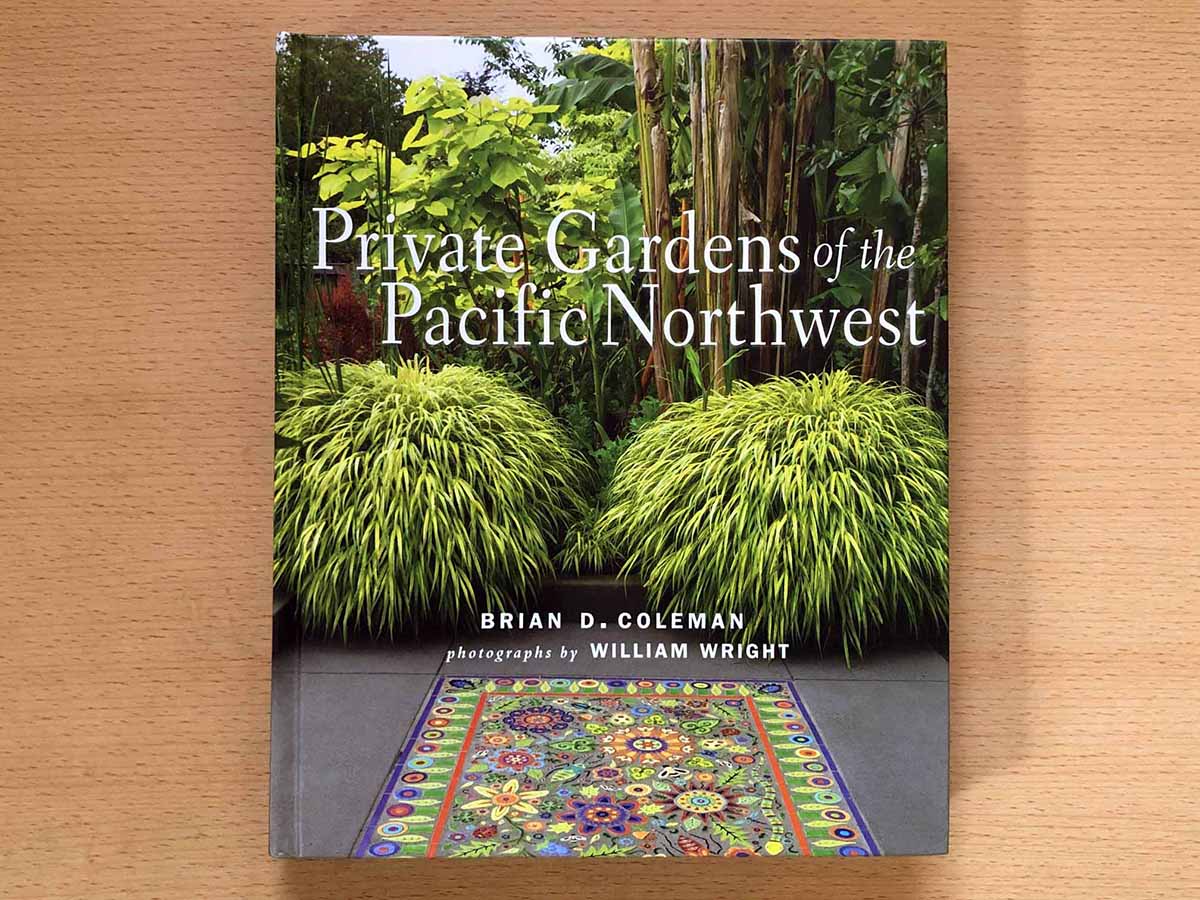

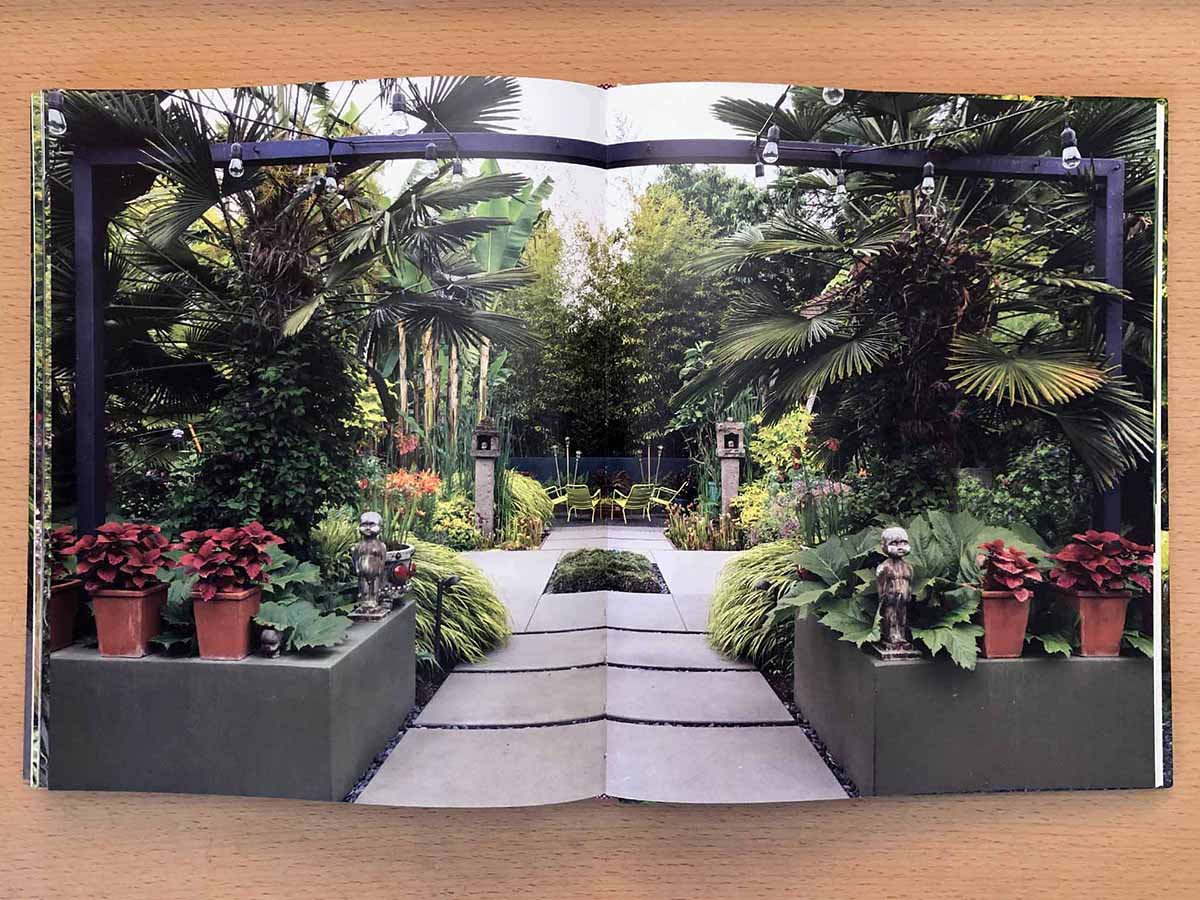
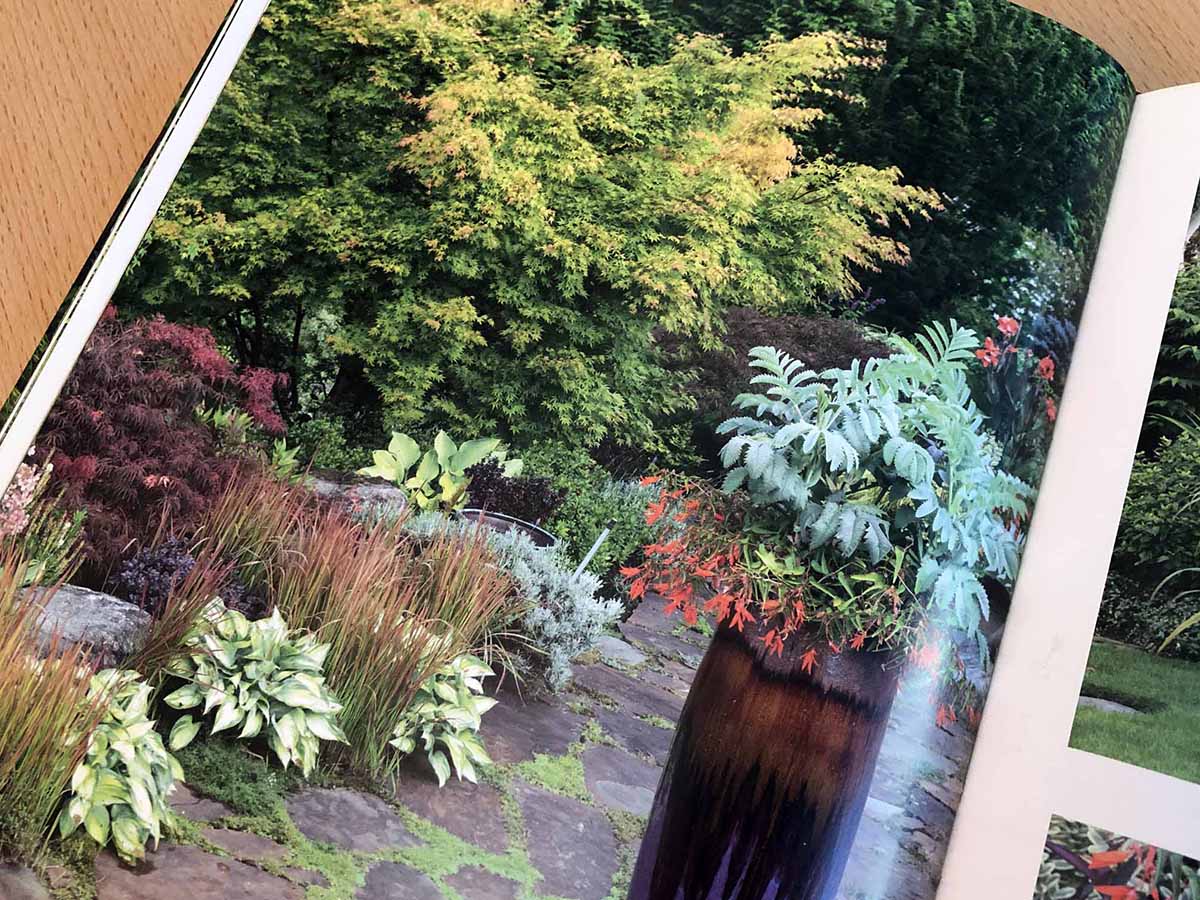
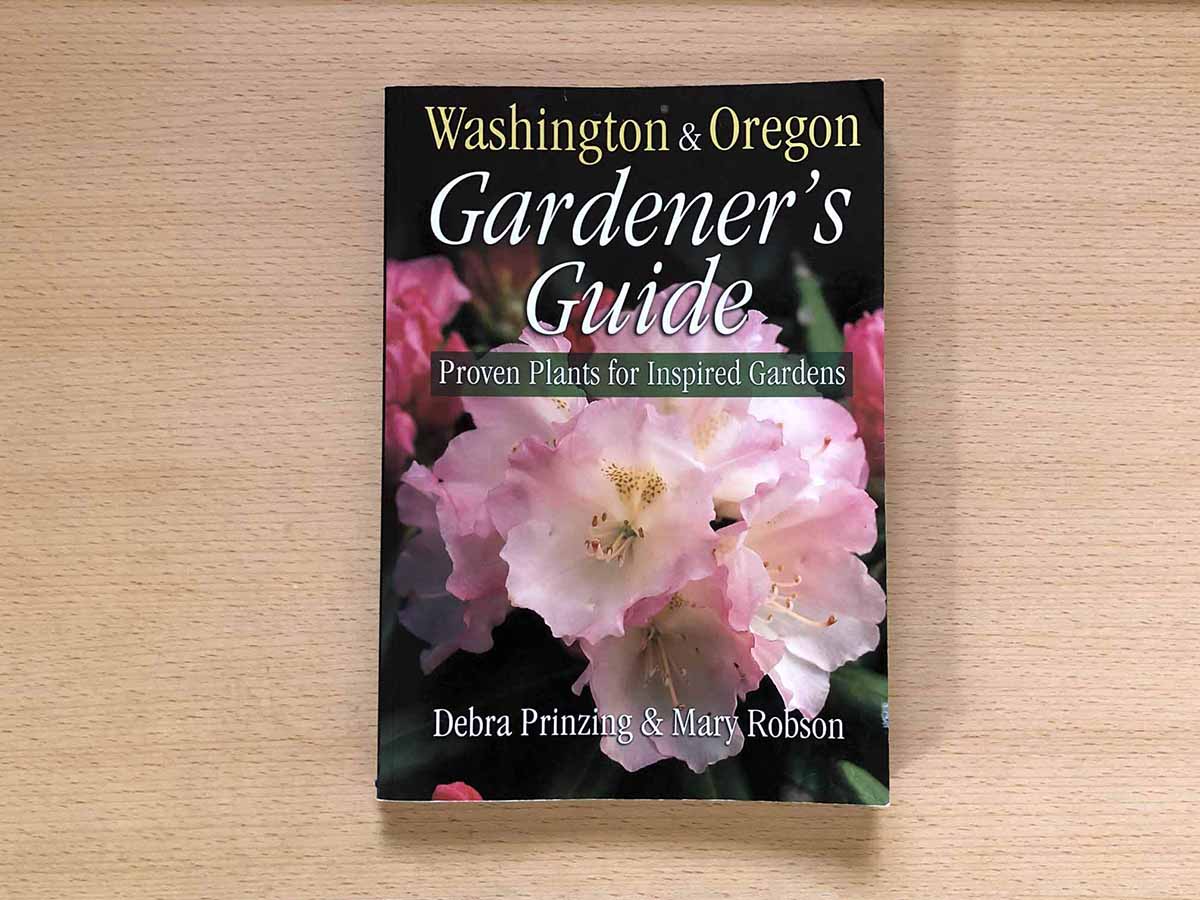
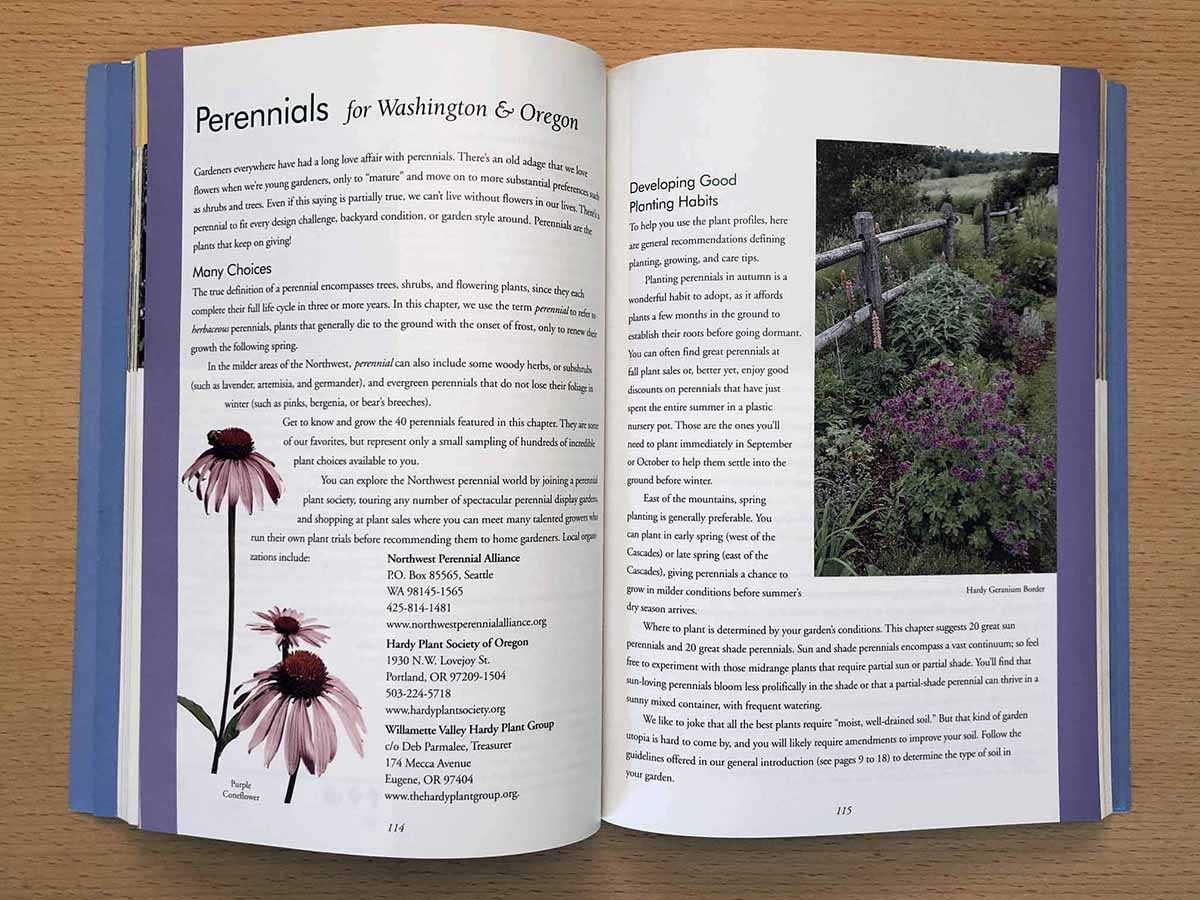
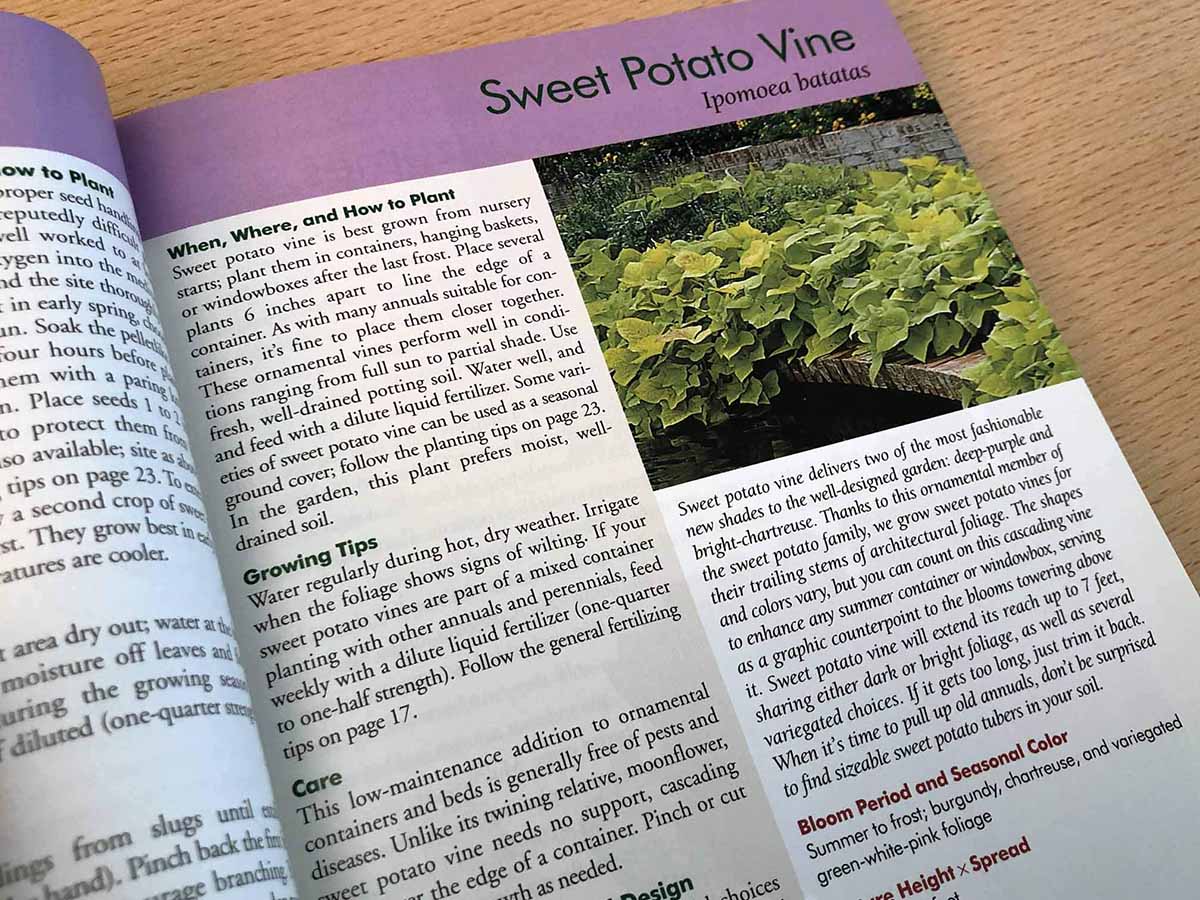
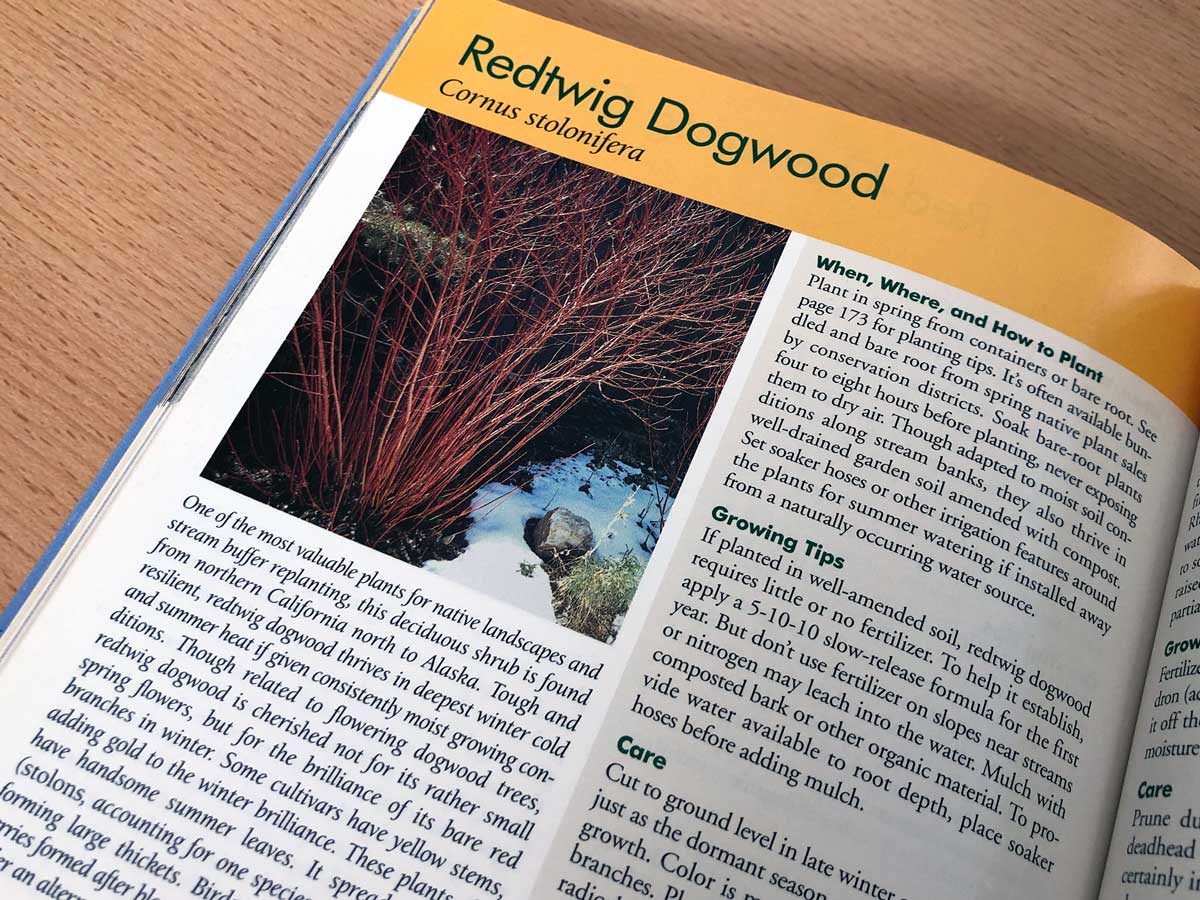
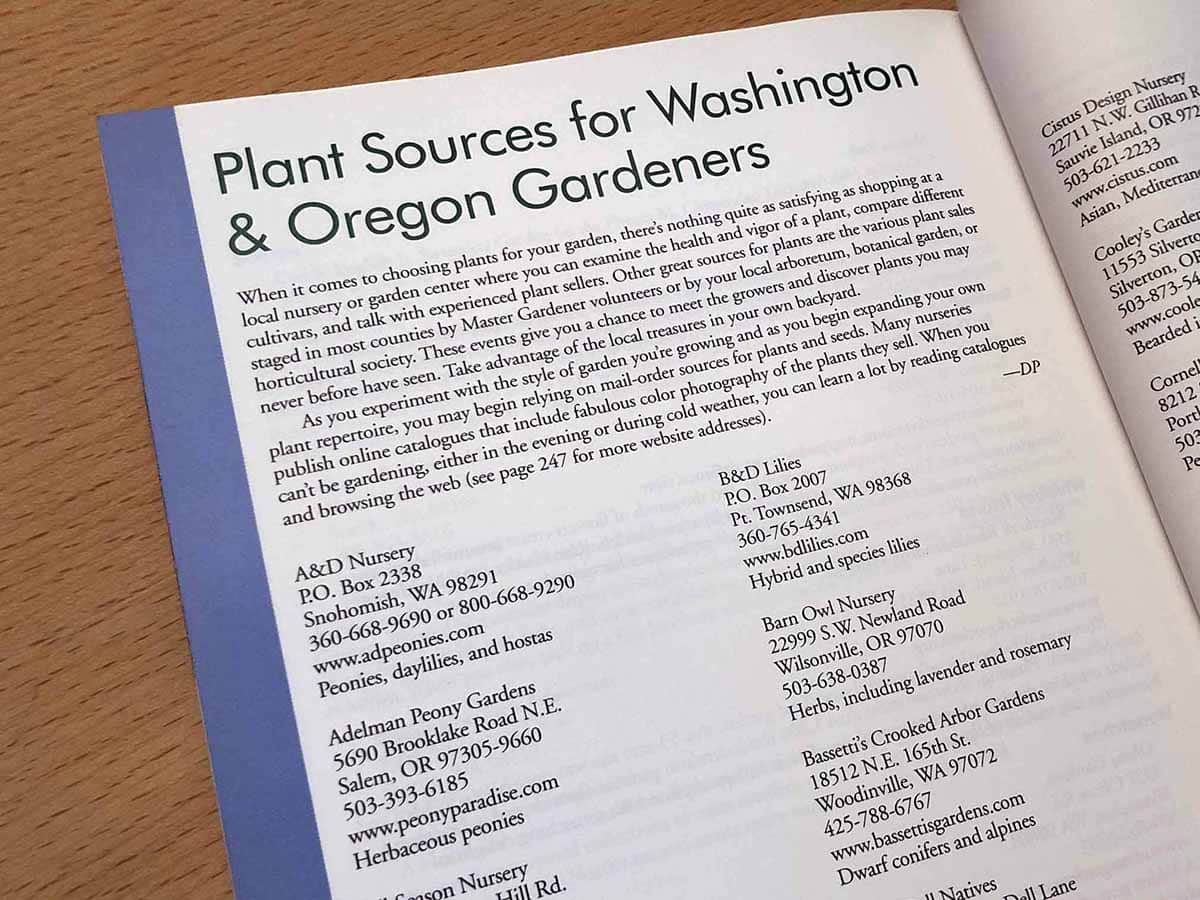

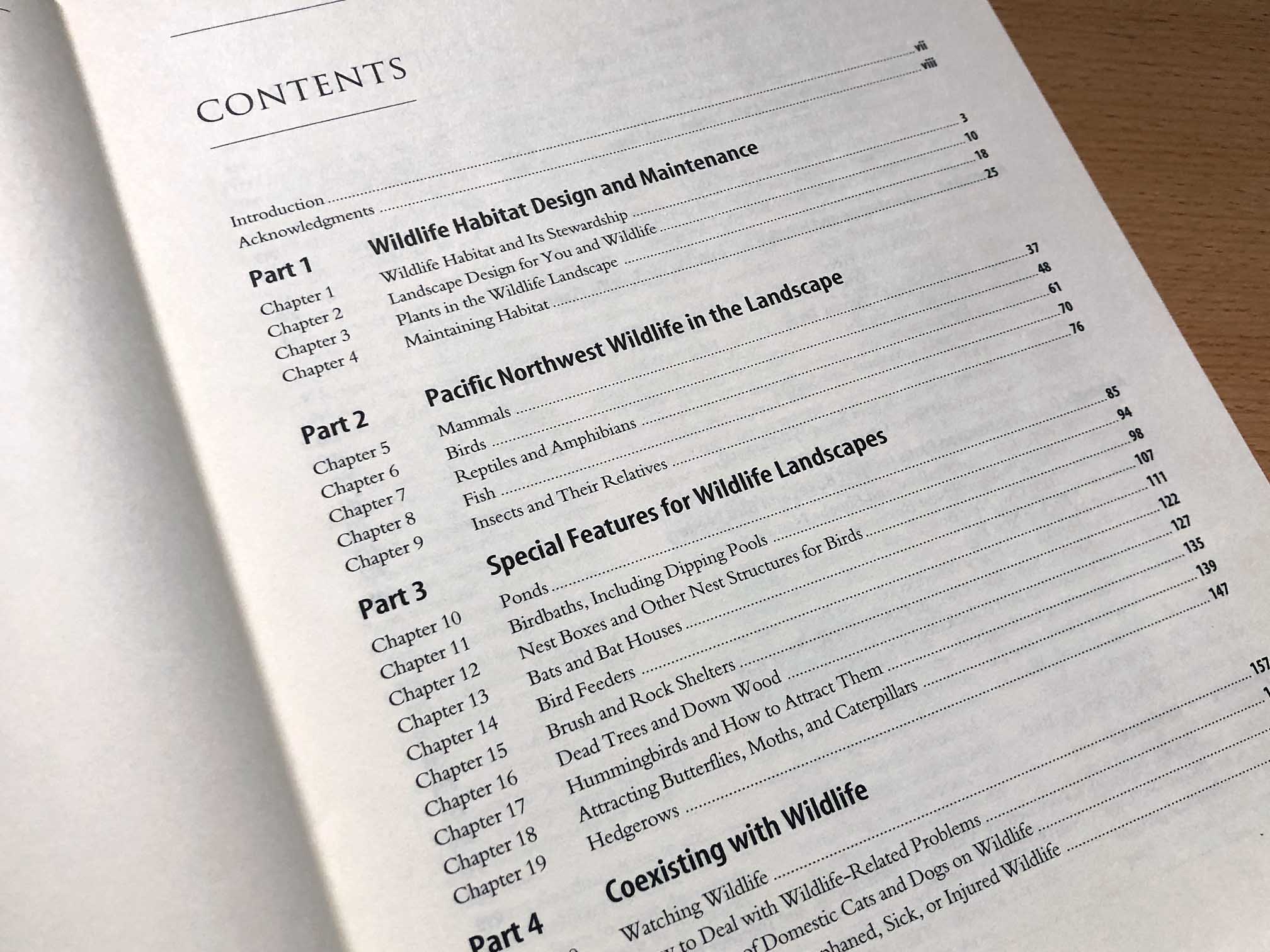
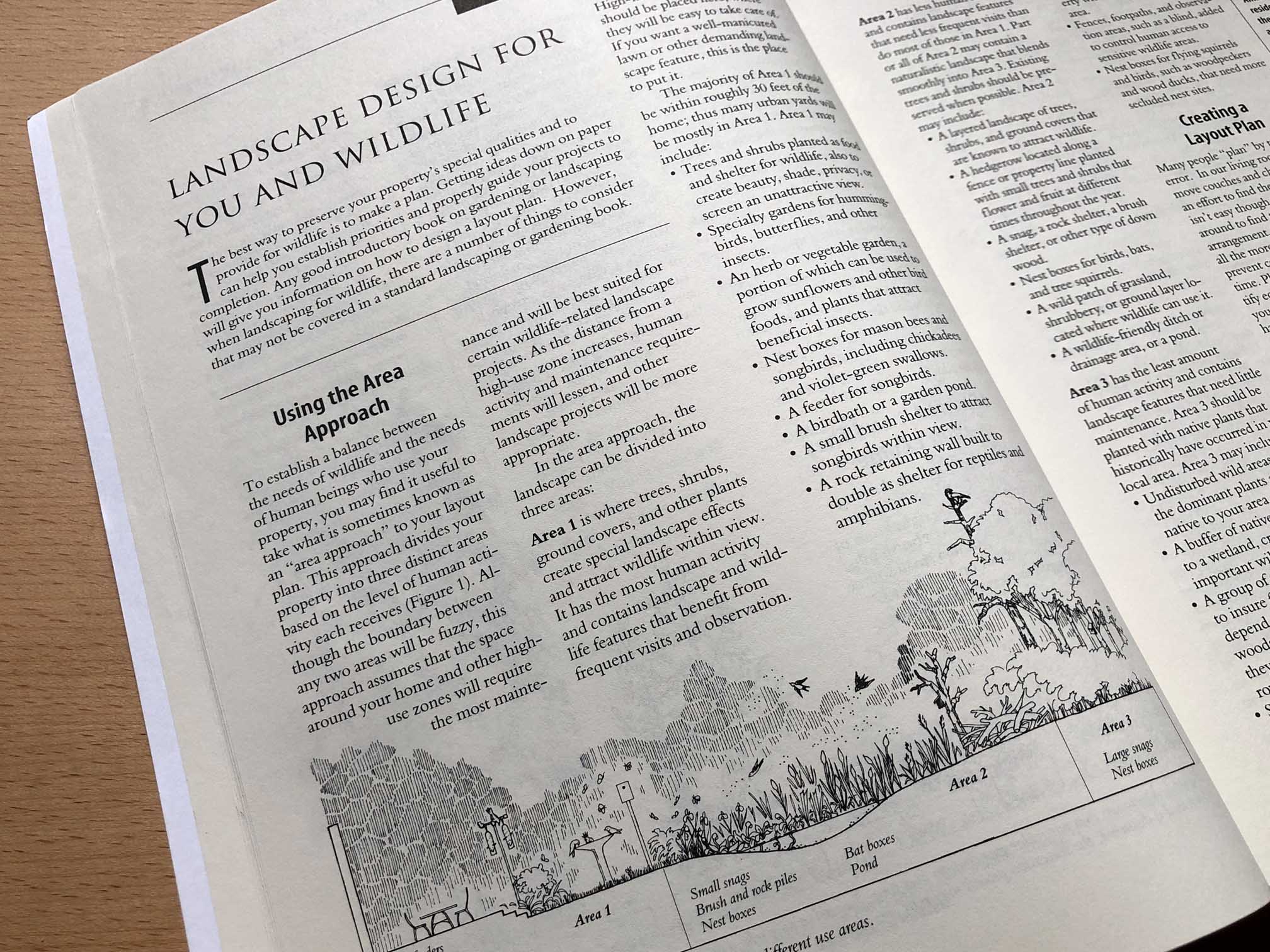
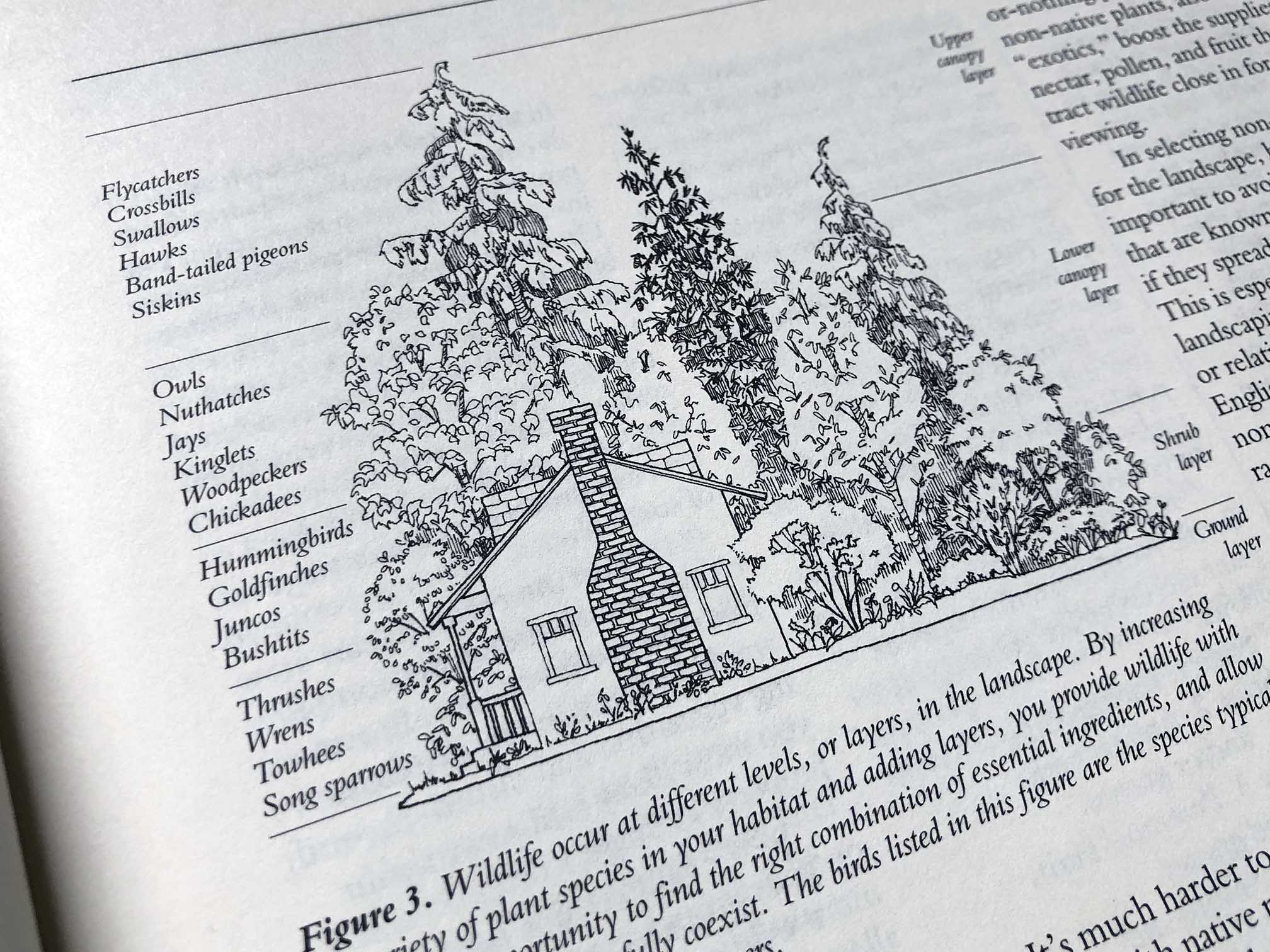
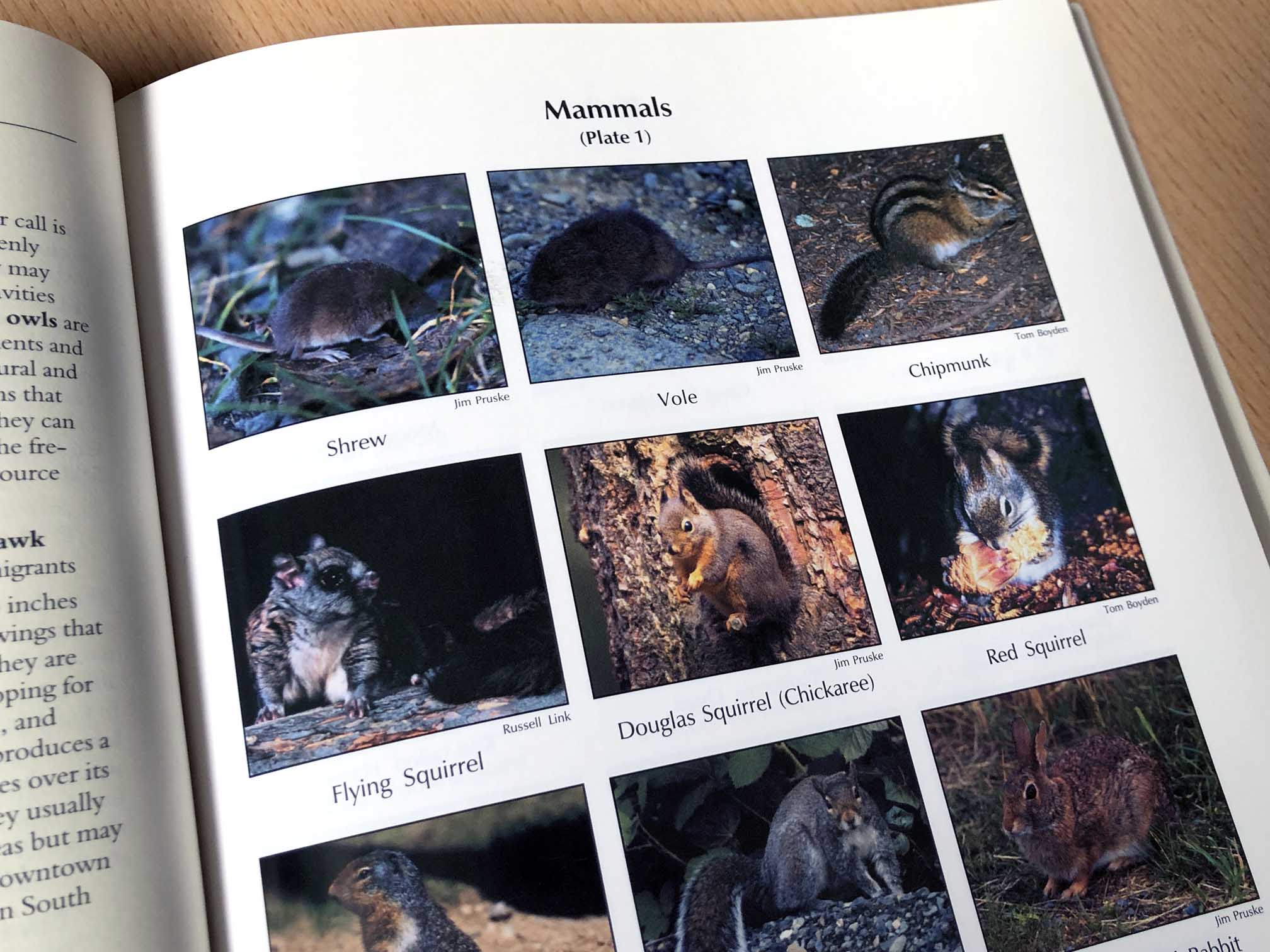
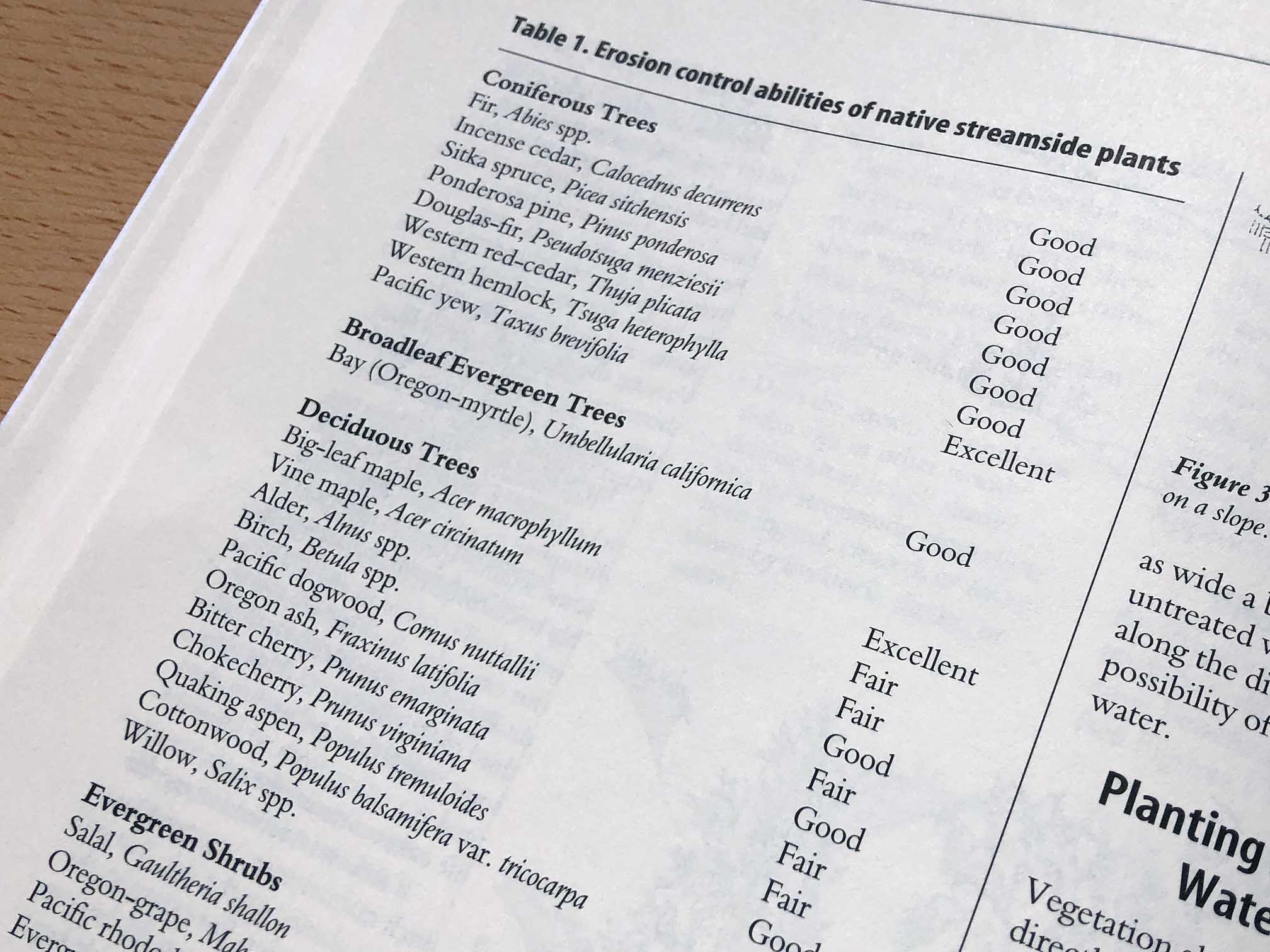
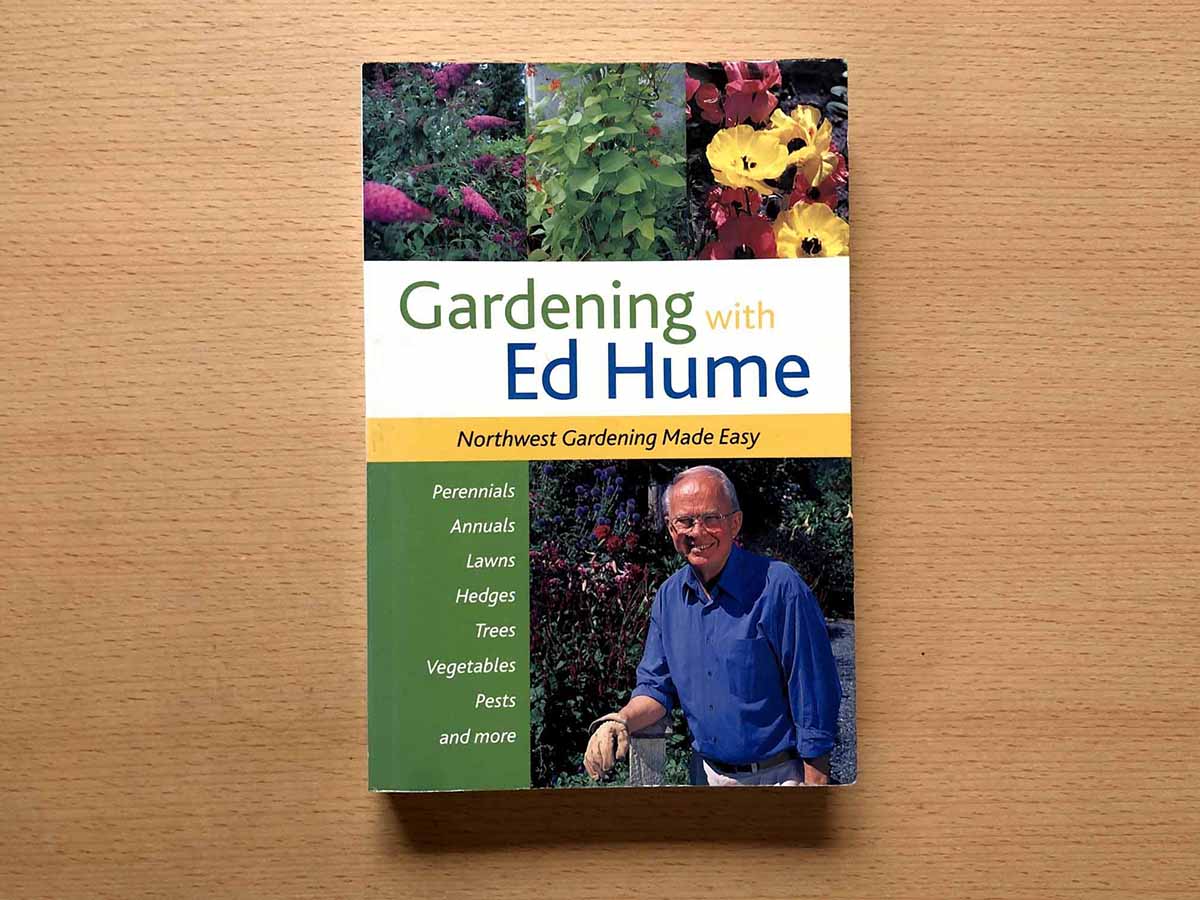
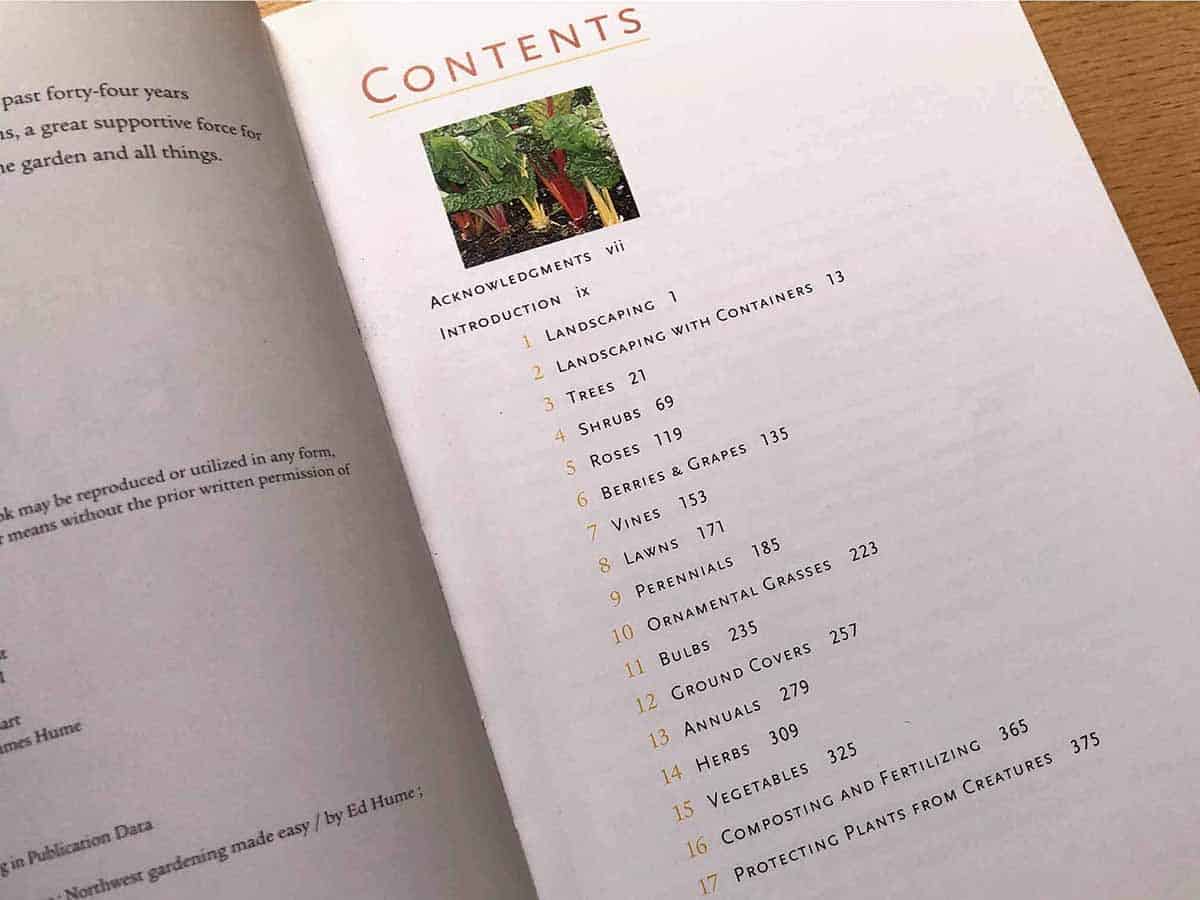
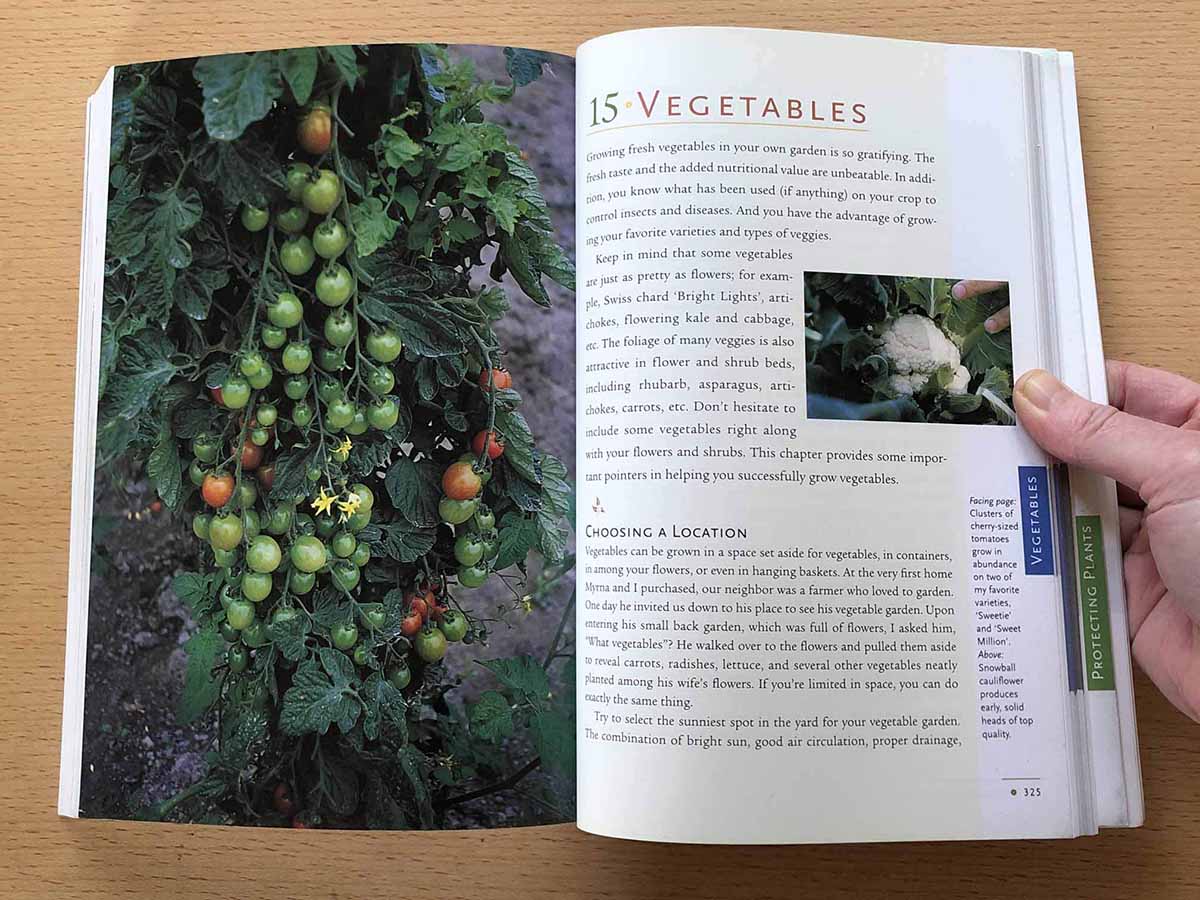
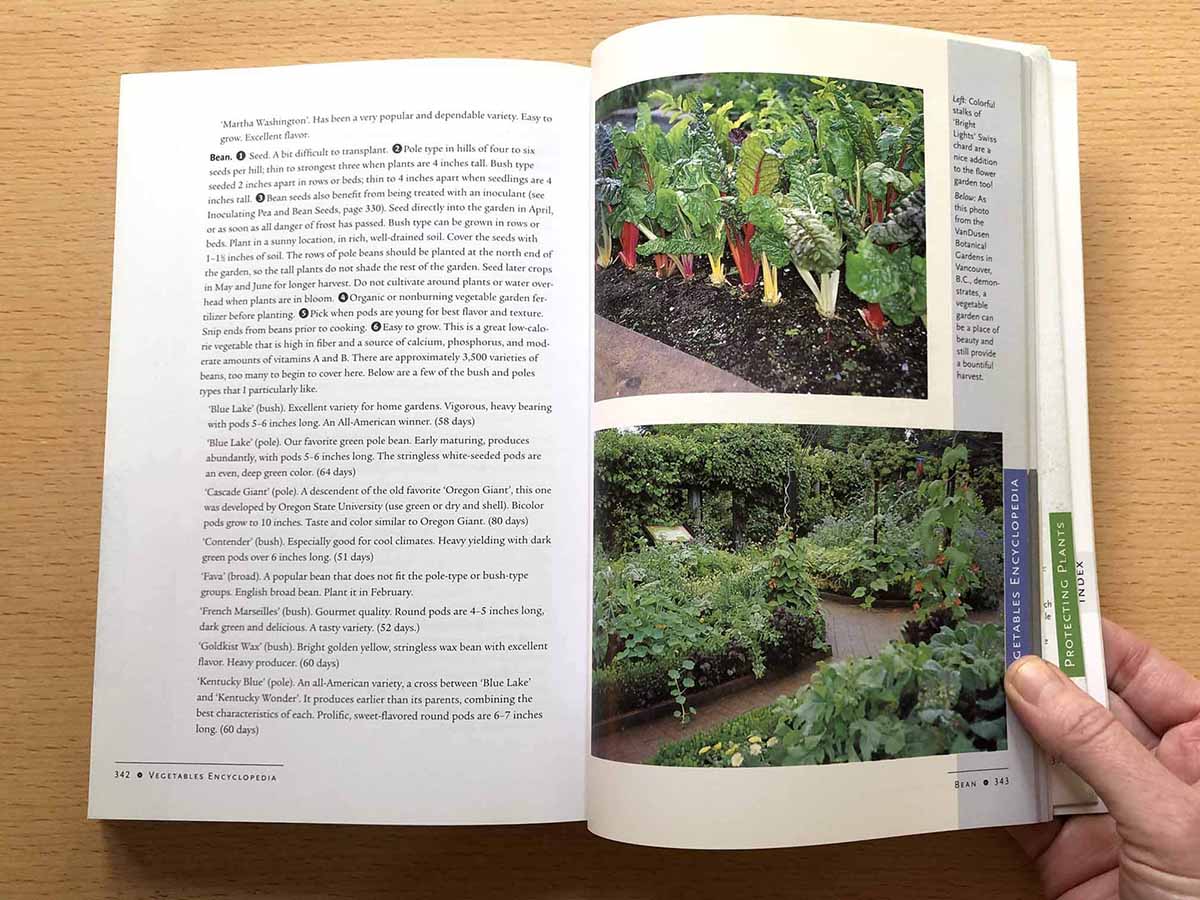


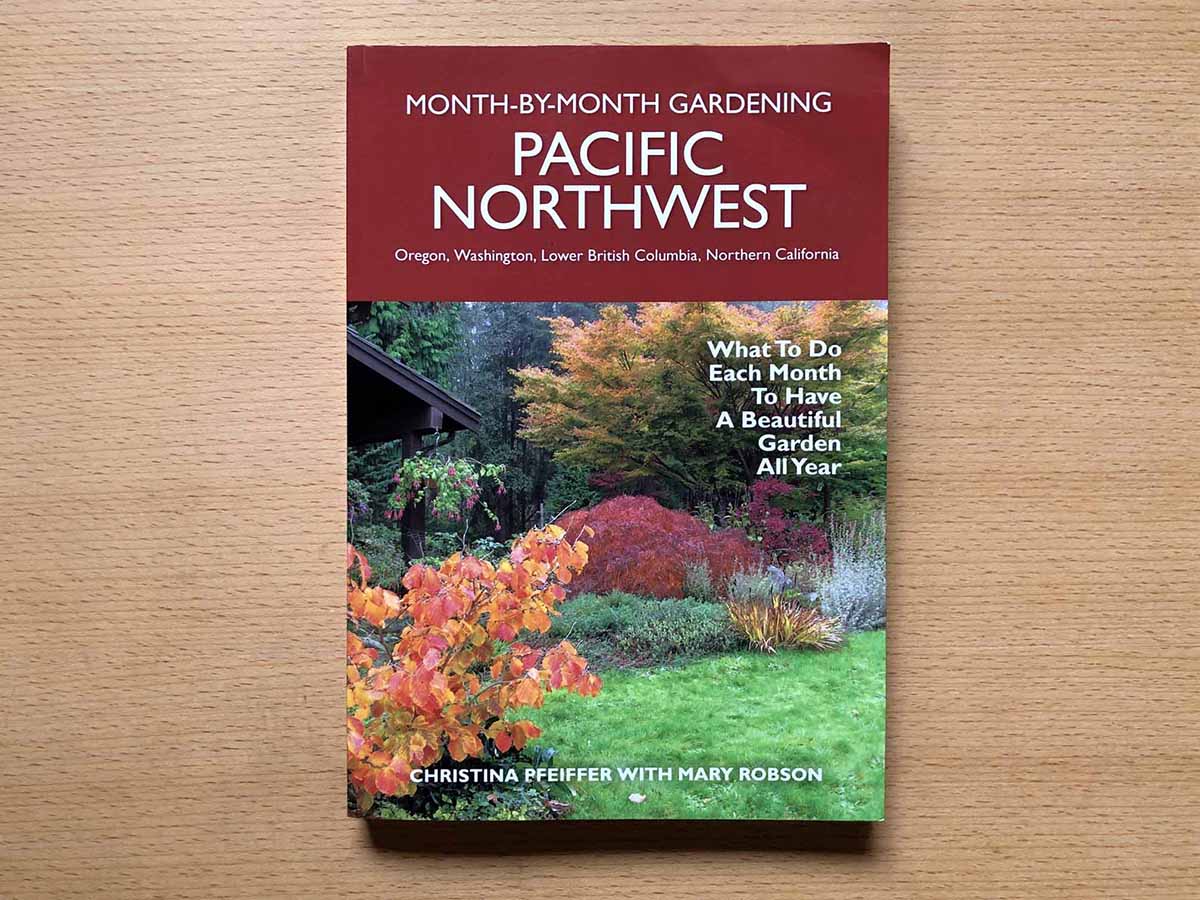
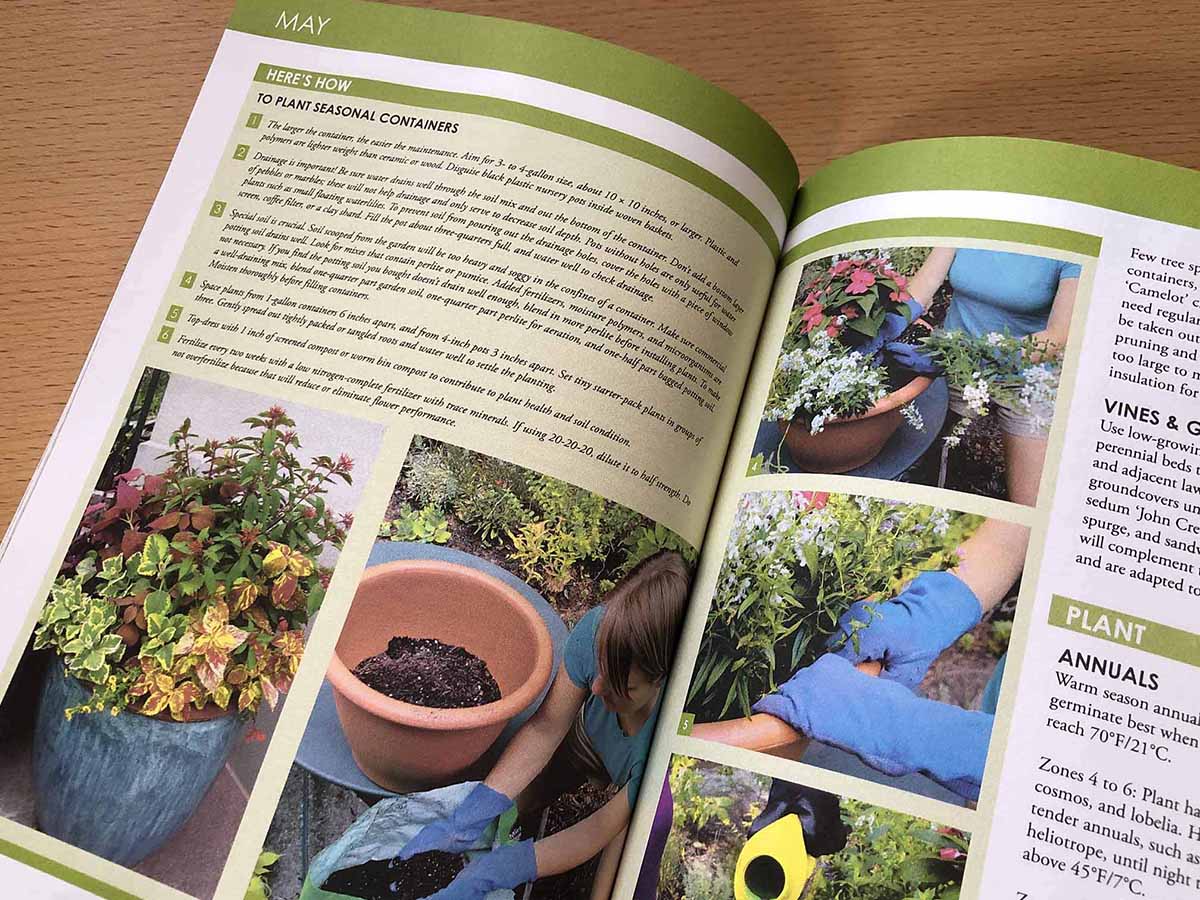
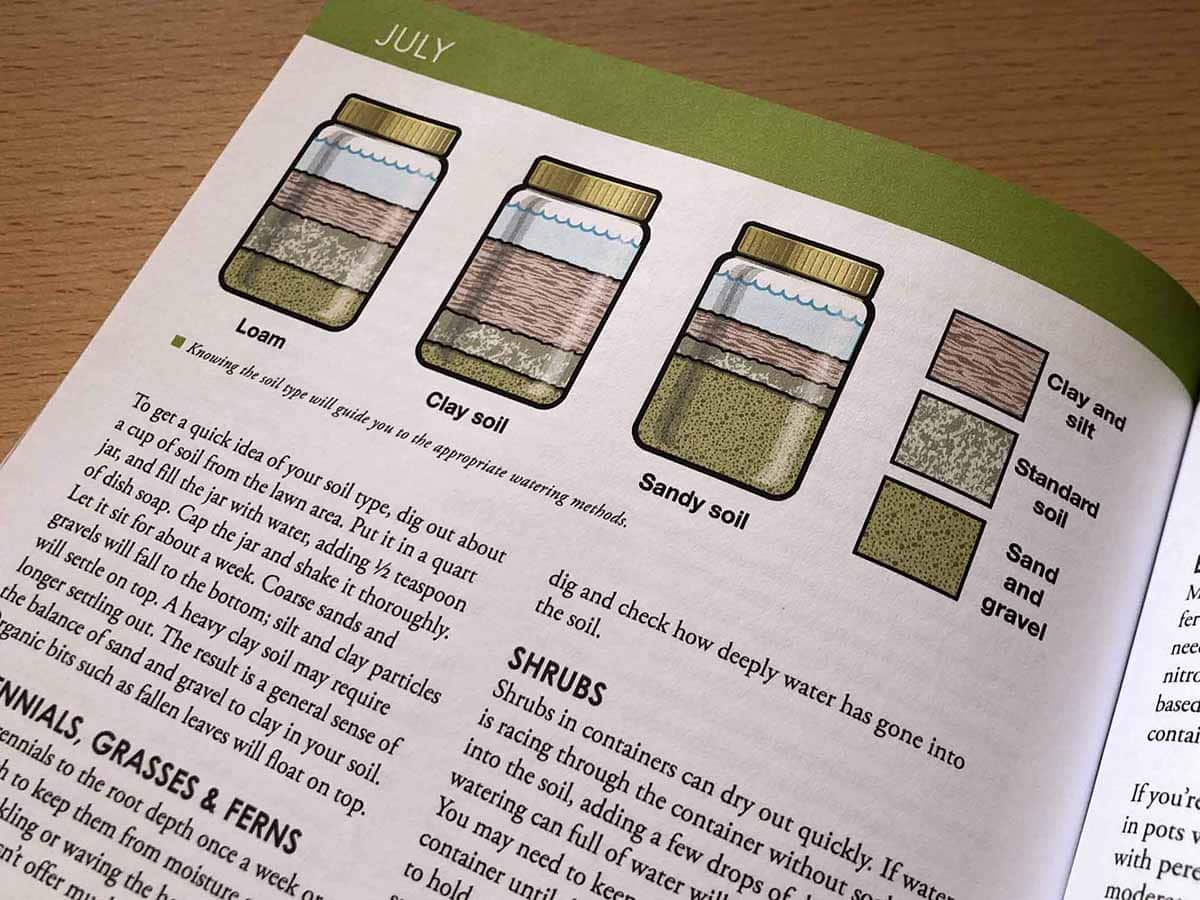


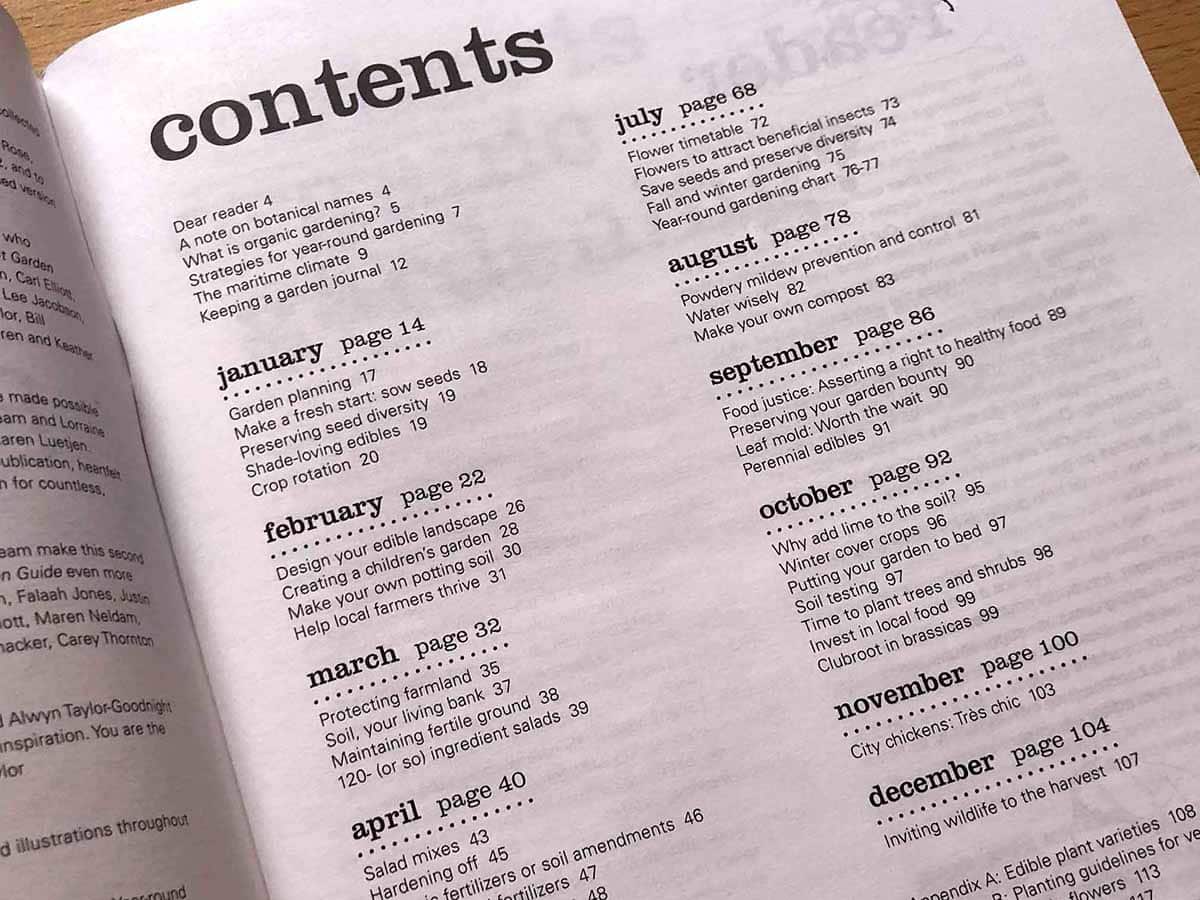
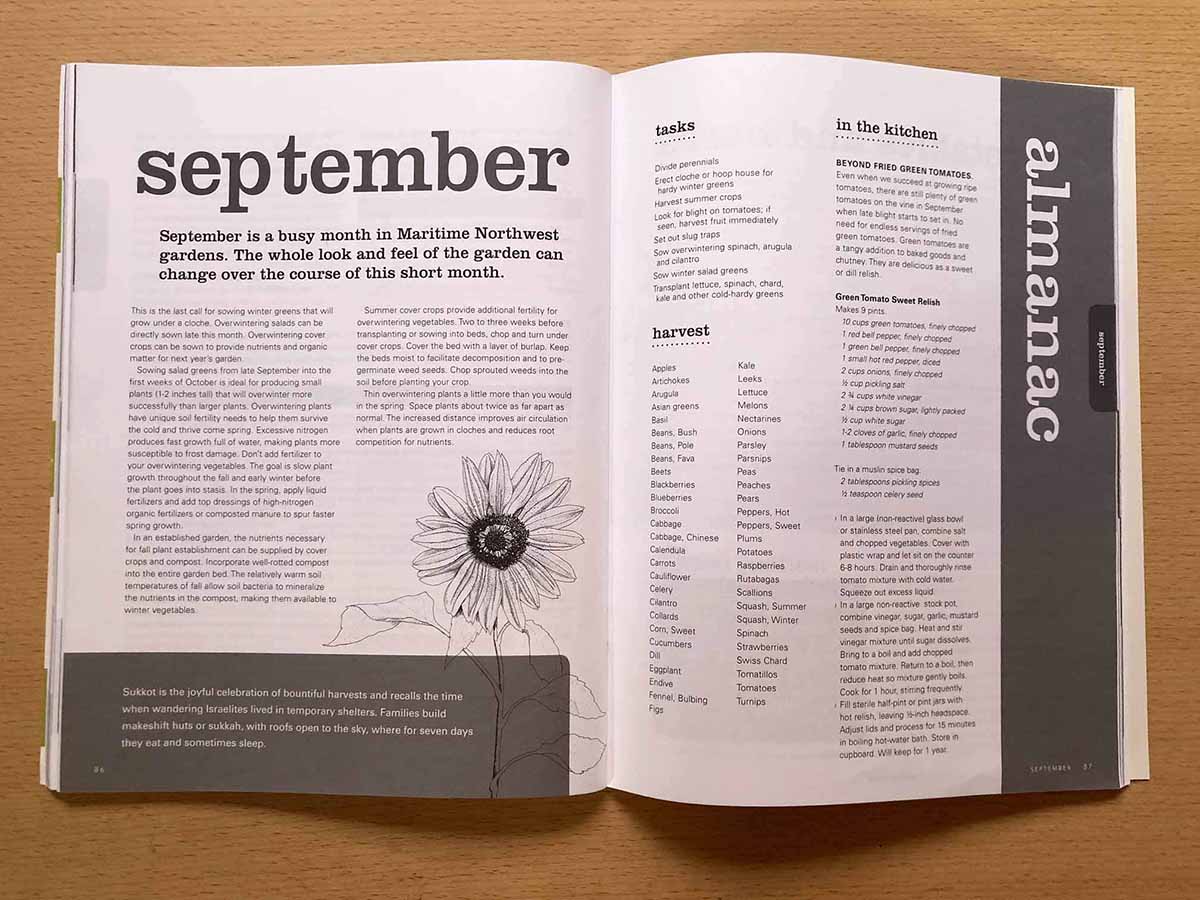
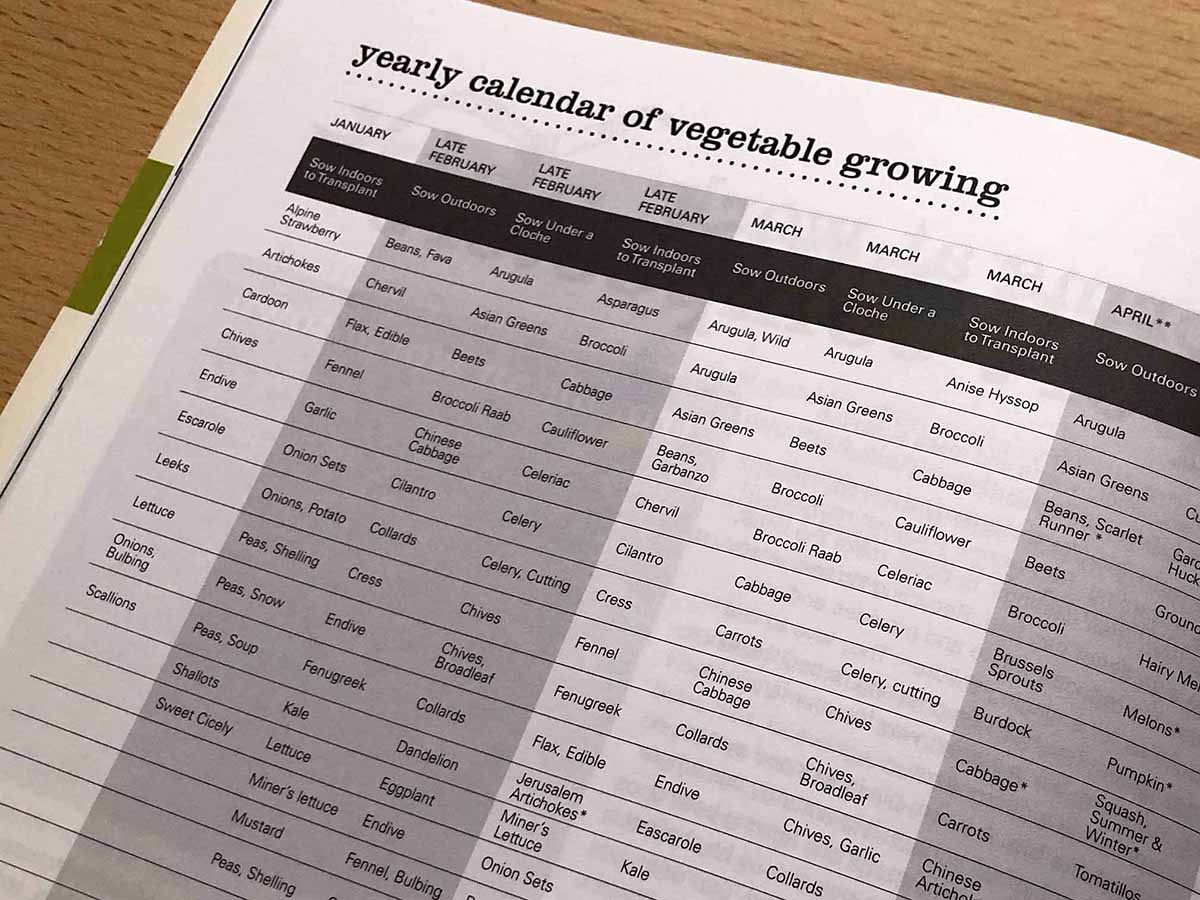

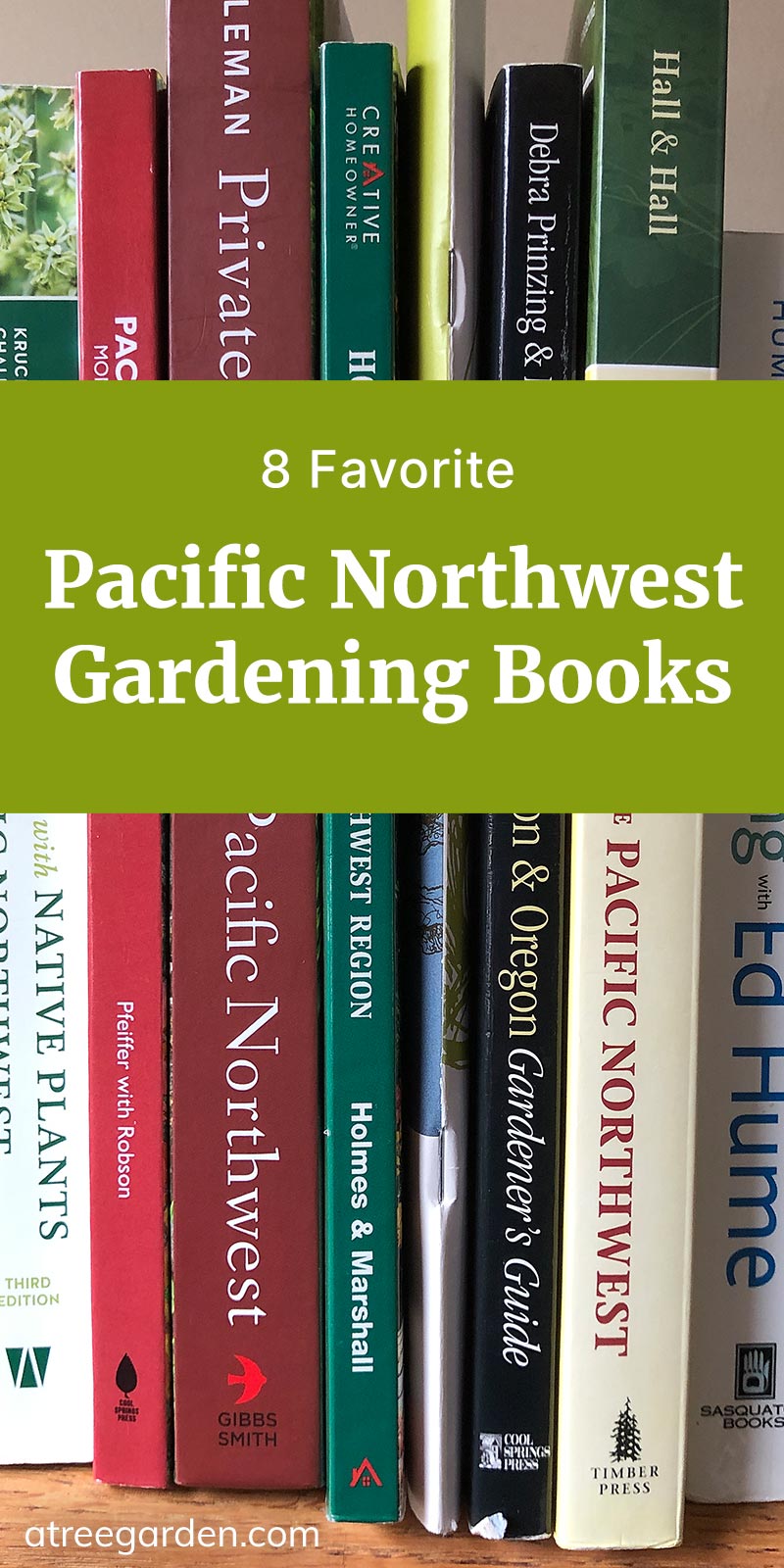
Thank you so much for all theses inspiring garden books!
Hi Katherine, you’re so welcome, thank you for commenting! Happy gardening 🙂